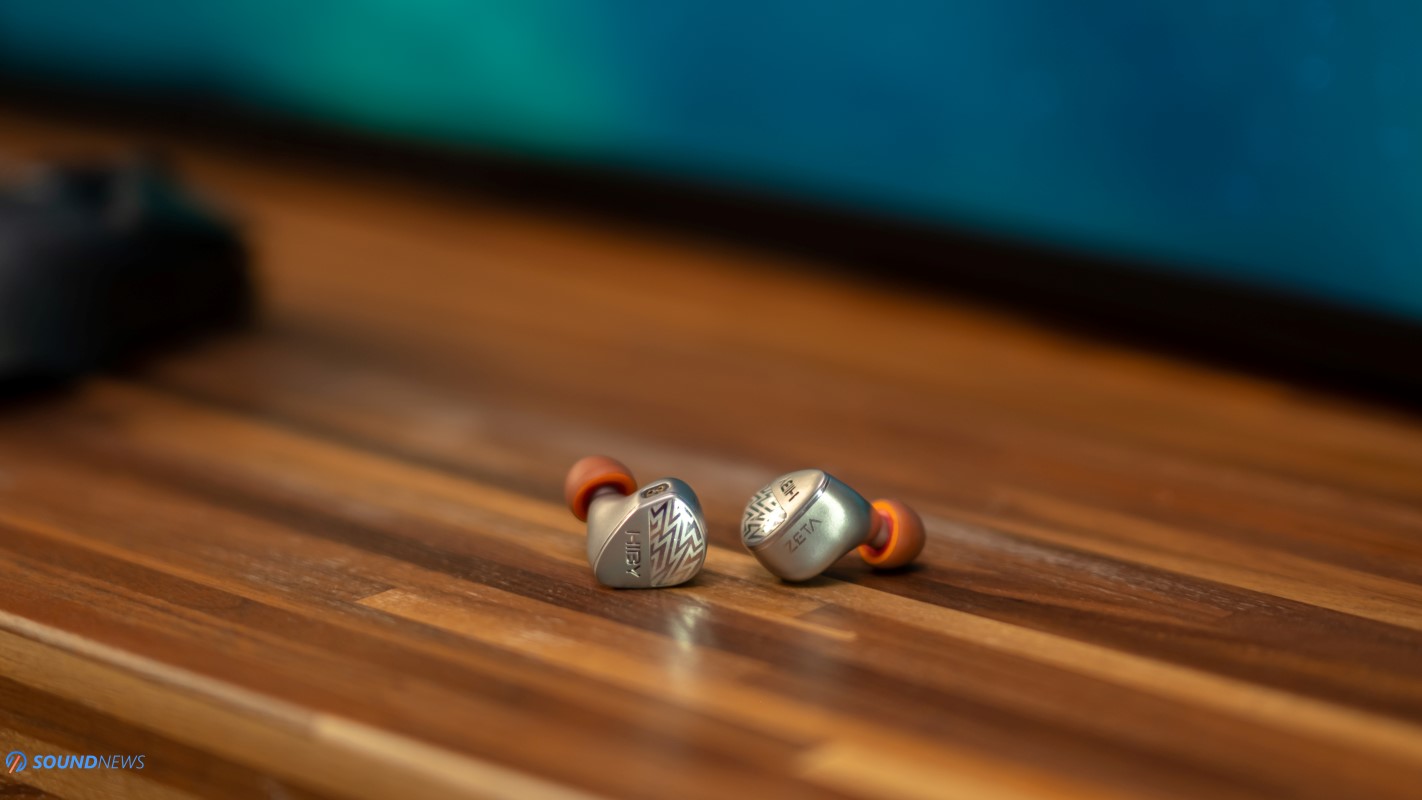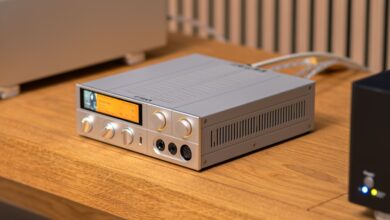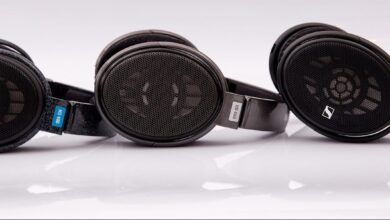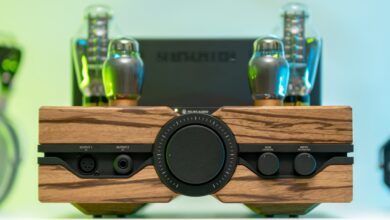HiBy ZETA IEM Review & Comparisons – Here comes the BOOM!
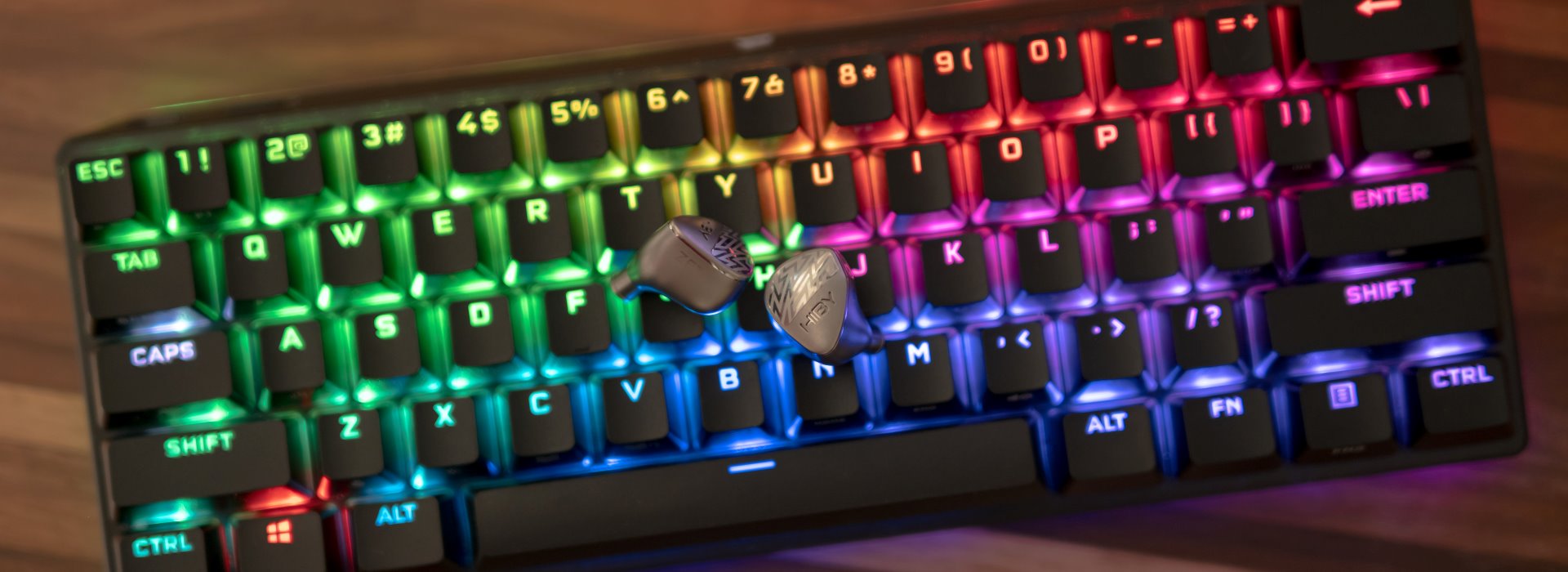
It all started with an idea: playing lossless audio files on the go. In 2014 and later in 2015, HibyMusic 1.0 app was released for Android and iOS devices, letting you play your favorite music content offline or wirelessly from the cloud. Things got more interesting when HiByMusic started working with 3-rd party digital audio player makers, bundling their software with them, further expanding their influence. Fast forward to June 2017, HibyMusic revealed their OG portable digital audio player (DAP for short), under their own brand, having an open Android platform, powerful Snapdragon SoC, and dual ES9028 chips for digital-to-analog conversion duties, which further strengthened their roots in this field.
Deep-rooted in personal audio, HiBy started working on their own in-ear monitors (IEMs for short) shortly after, releasing several entry-level models. When Crystal6 was revealed in 2021, reviewed around here as well, it was clear that HiBy was no longer toying around with personal audio, as Crystal6 delivered a clear and transparent sound, albeit not as fun and punchy as I desired. Years passed and a few IEMs waving the same banners entered the arena, but none of them left a powerful impression. A year ago, I was informed that two flagship products would be revealed soon, bound by blood and giving maximum performance when working as a team. RS8 DAP was soon revealed, having flagship specs and a ginormous battery capacity. Armed with the sounds of mother nature herself with carefully selected resistors working in a ladder, forming an R2R network, Class A/AB amplification with the help of discrete components, MSEB settings, software plugins, and Darwin Controller, you end up with the most customizable DAP of the moment. Forthwith, HiBy found their sweet beta, unveiling and unwrapping their trusty ZETA. The circle is now complete. From entry to high-end IEMs, portable DAPs, HiFi dongles, colorful accessories, and never-to-be-seen software features, HiByMusic made a name for themselves and I can’t wait to unravel everything about their newest ZETA and RS8 DAP.
While the ZETA might look like yet another IEM release coming from the East on a daily basis, these aren’t some run-of-the-mill earbuds after a close inspection. It comes with a powerhouse of drivers: dynamic, balanced armature, and electrostatic, all having a grand party, five-way style, with nine drivers per side. It’s like having a whole rock band jamming inside your head, never stopping until you start grooving along. Having a CNC-machined titanium body, custom-developed dynamic, balanced armatures, and EST drivers working in a tribrid, 5-way configuration developed from the ground up, including a one-of-a-kind electronic crossover and the highest purity OCC copper conductors, I’m sure there aren’t additional peaks to climb after the ZETA.
Every single component was custom-developed and tuned according to their strict specifications, trying to squeeze maximum performance out of a pair of IEMs. Having a flagship status in their portfolio, ZETAs will cost you a pretty penny, going with a $1399 price tag. Without further ado, let’s dive in and uncover everything there is to know about them.

Unboxing Experience
Living in a world where trees are harvested and plastics are thrown away in the ocean, my day becomes brighter when I see simplistic packaging made out of recycled cardboard, without the use of plastics. The ZETA isn’t coming in a fancy wooden box or oversized packaging with a mountain of hardened foam for extra protection measures, instead, we are getting a smaller-sized box, which sends a simple, yet powerful message right away: Make music More musical. After opening it up, a smaller box is revealed that holds a rounded dark blue colored leather case on the left, and the IEMs themselves on the right. The leather case holds two minuscule-looking textile pouches, just in case you’ll want to further protect their titanium shells during long trips. A small brush can be found in there as well and a marvelous-looking detachable cable with a striking lapis lazuli color scheme which does attract a few eyes. The cable is thick, sturdy, and solid-looking, terminated with a 4.4mm connector, without additional connectors or cables provided in the package. You either go big with the 4.4mm connector (which is still my favorite balanced connector) or you go home. The IEMs themselves are screaming high-quality craftmanship, every shell is carved from two pieces of raw titanium ingots, which look neat near a titanium-wrapped HiBy RS8. Under the IEMs, there is a small compartment that holds eight pairs of ear tips and with the ones already preinstalled, we have 3 pairs of soft brace, medium brace, and enhanced brace ear tips coming in S, M, and L sizes. Soft (white) and medium (black) ear tips seem to work nicer with my ear anatomy and I’m wondering if there is a difference sound-wise, so expect some detailed measurements for all types of ear tips. This sums up the whole unboxing experience, not going with big or small packaging but with the right size for a pair of high-performance IEMs.
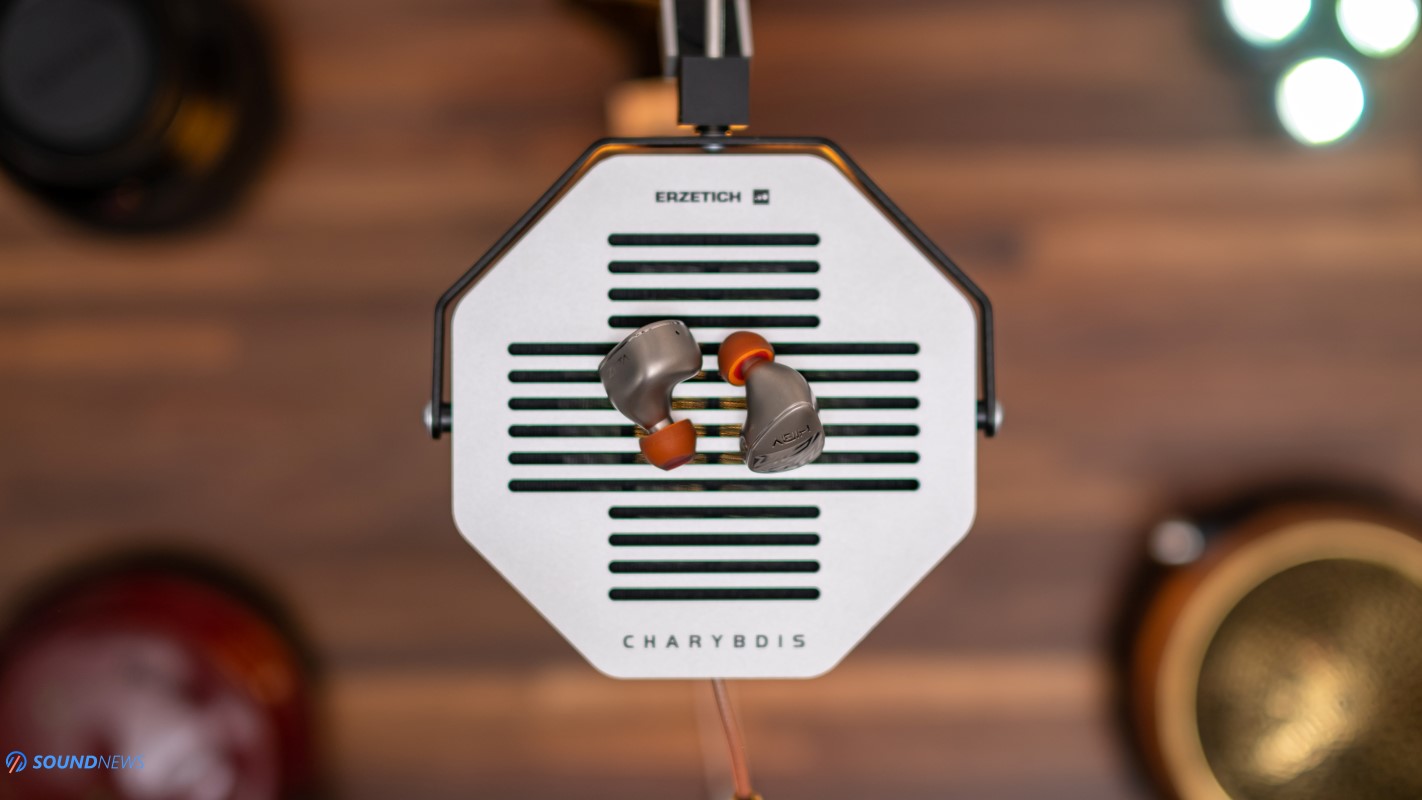
Build Quality & Looks
Their shells are sculpted from raw titanium nuggets on a CNC machine, you have the main shell and a cover that will seal the deal. I imagine it’s a tedious and time-consuming process, especially considering that titanium is a soft metal, but the end result speaks volumes. Simply put, these are some of the nicest-looking IEM bodies I ever played with. They look perfect to me, having a shape that follows the lines of my cheek. Their matte titanium housing makes them less slippery compared to electro-painted or resin bodies, so they will stay put no matter what.
Their shell is slightly bigger than usual due to having 9 drivers per side, but due to smooth lines and lightweight titanium body, these aren’t putting a lot of pressure on the ear cavity and after jogging for an hour or two, I didn’t feel discomfort as I’m usually getting with massive multi-driver IEMs.
The outer nozzle has a diameter of about 6 mm – slightly bigger than the standard 5mm ones, but you can still use your ever-growing ear tip collection. I tried a few SpinFit and memory foam tips and while the fit was tighter, they worked without issues on the ZETA. The nozzle length is similar (6mm), so again, Comply, SpinFit, and many other 3rd party ear tip brands should work nicely with them. The 2-pin connector is slightly buried in the shell and it doesn’t stick out. You need to apply a higher force to attach and detach the cable, which should save the 2-pin connector in the long run. HiBy does have a long history of using 2-pin connectors with their IEMs and while we don’t get the comfort of rotating MMCX connectors, the 2-pin connection is sturdier.
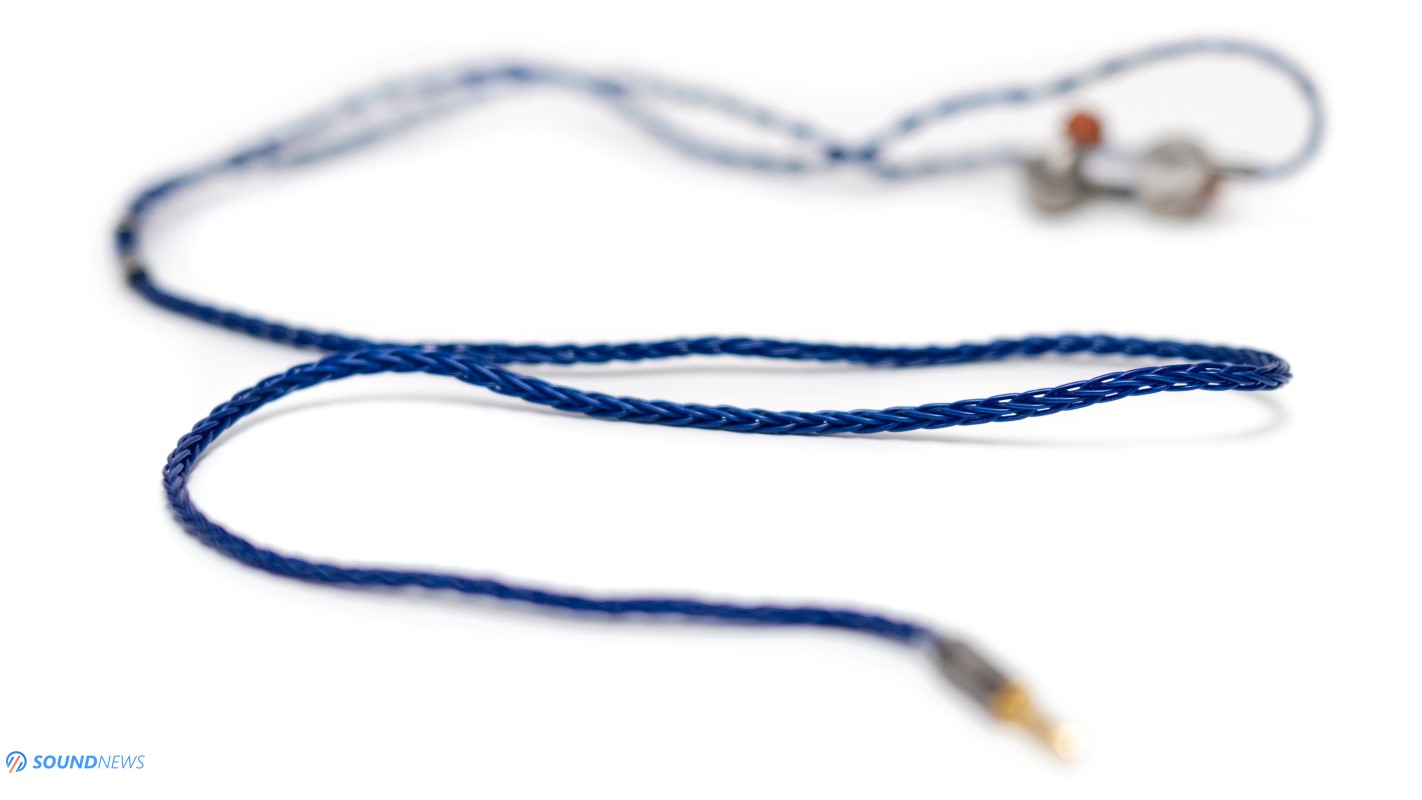
The big surprise was getting to know their heavy-duty detachable cable. Not only it’s a strong one and quite probably the thickest cable I have ever seen bundled with IEMs, but the conductors themselves are of high-purity OCC copper. It’s an 8-core fully balanced litz wire. In layman’s terms, this is the first and the last cable you’ll ever need to use with the ZETA.
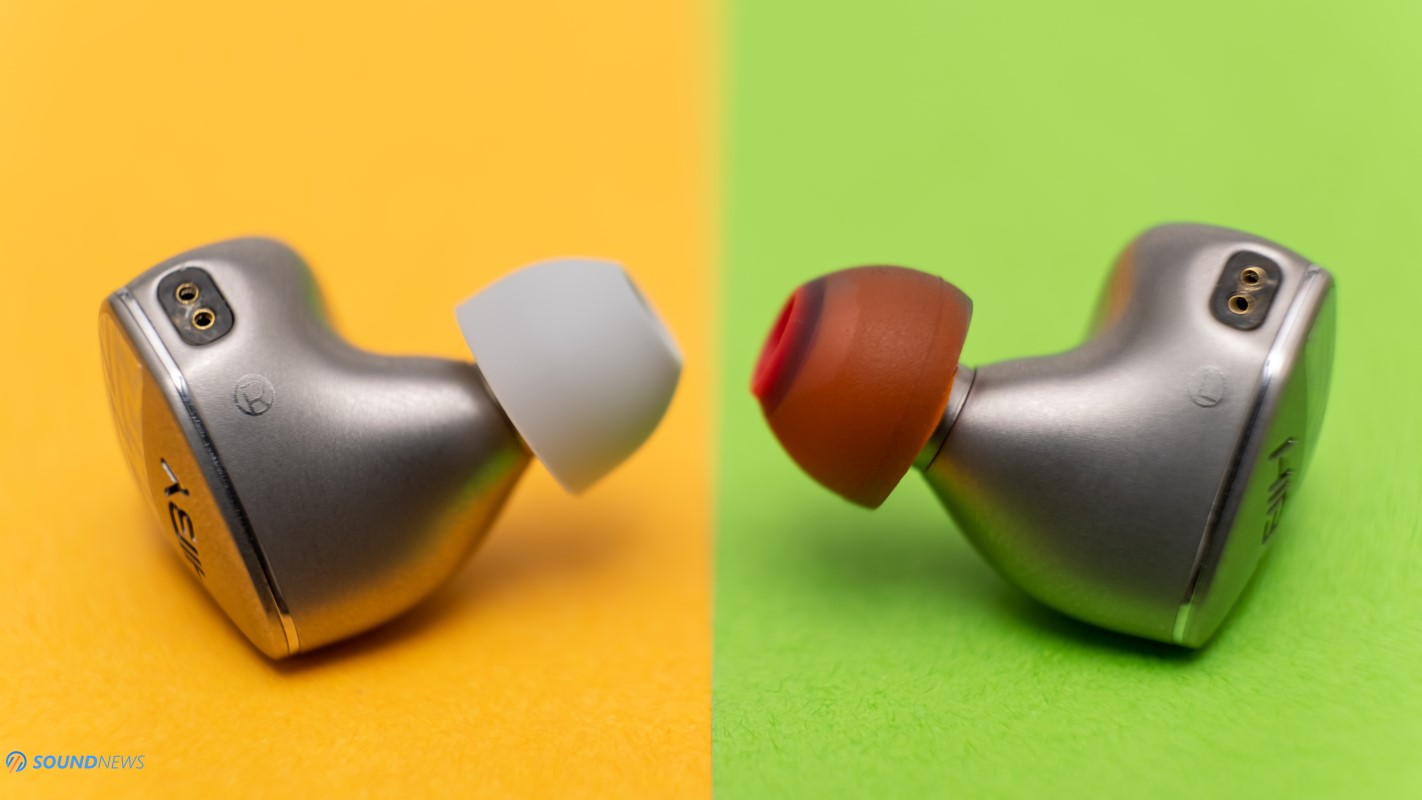
ZETA has 9 drivers per earpiece, combining a dynamic driver with 4 balanced armatures and 4 EST electrostatic drivers, working in a tribrid, 5-way configuration, naturally having a 5-way electronic crossover. The bass and especially the sub-bass is rendered by a 10mm ULF dynamic driver custom-designed for long excursion and low distortion, exactly how high-quality subwoofers are being made today. The dynamic driver is made out of dual-layer Kevlar, having an extreme tensile strength that is 6 times higher than steel, completely eliminating breakup points. This driver is surrounded by liquid silicon which decouples the driver from the IEM body, exactly how the woofers of HiFi speakers are being made today.
The midrange is rendered by a massive full-range custom-made balanced armature of Sonion together with dual armatures from Knowles. The whole treble region is rendered by another Knowles balanced armature and by four custom tailored 3rd generation electrostatic drivers of Sonion. There are 5 independent chambers producing sounds and obviously 5 tubes will be transporting the sounds into our ear canals, controlled by a 5-way electronic crossover which completes the whole affair. While I experienced tribrid IEMs multiple times by now, none of them used as many custom parts…which should have a massive impact on the sound performance.
Having a sensitivity of 112dB per a single mW of power, these are easy to drive. Their impedance stays impressively low at just 9 Ohms, which already suggests two things: these can be used as noise sniffers for portable and desktop headphone amplifiers, something which I’m already doing for 2 months straight, and secondly, due to a very low-impedance, they adore a healthy dose of current coming from your source and that’s precisely why HiBy recommends using the Turbo mode and Class-A amplifier operation on their flagship RS8 portable DAP. After trying them out on different amplifiers, these seem easy to drive at first, but they will flourish and prosper when a powerful amplifier feeds them clean power.
This is all you need to know about them, so let’s hit some eardrums and check them out!
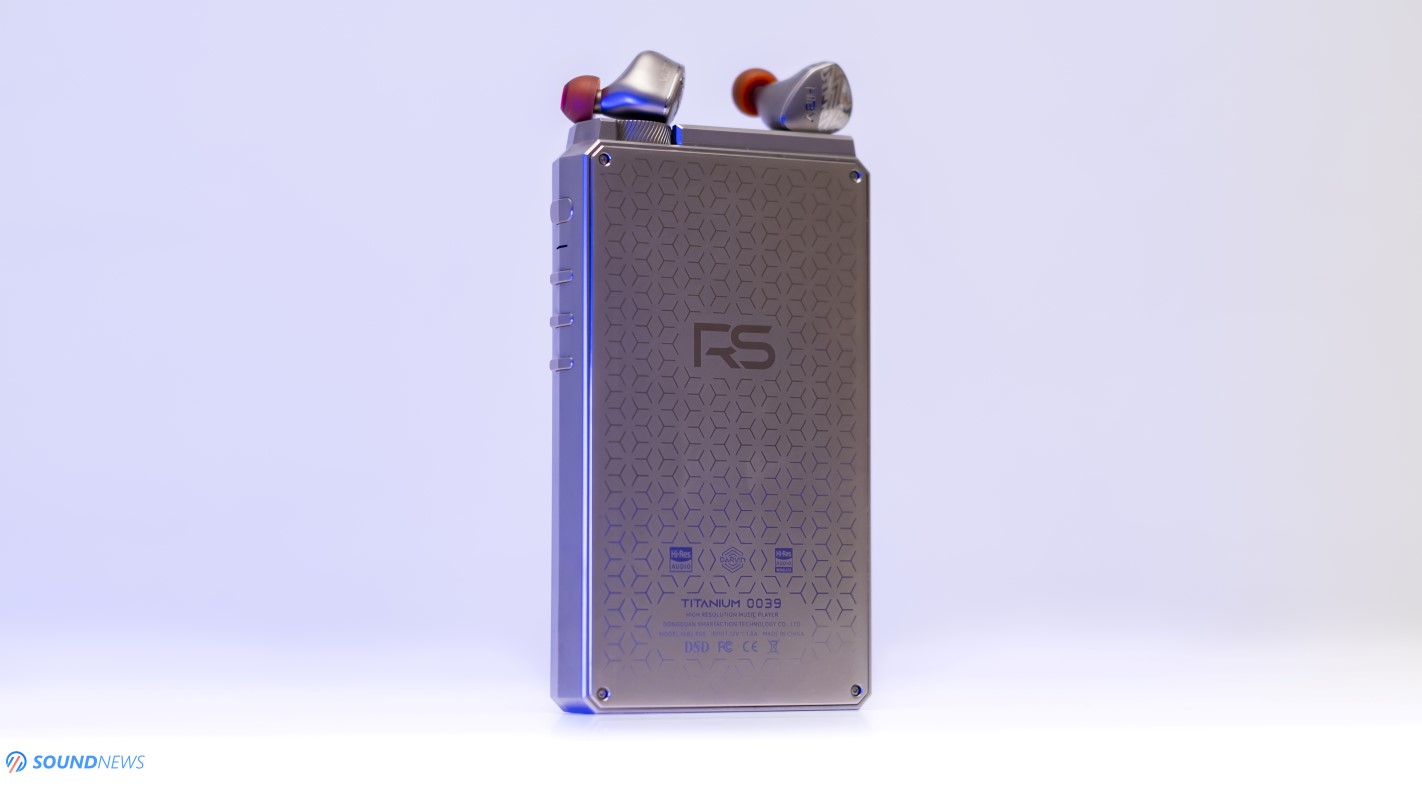
Sound Performance
I. Preliminary Sound Impressions
Let’s do it differently this time around. I’ll mention what I like about them and then I’ll tone down the excitement and bring up what wasn’t as impressive on them. Before I do that, I need to confess that while I still listen to IEMs from time to time, since I’m writing articles and filming videos (mostly) from home, I’m inclined to use full-sized headphones, since they will be giving more air, a wider soundstage, a holographic and out of head experience, more oomph down low and overall, a more complete sound top to bottom that can compete with a nicely crafted stereo setup. I was a 70% headphone user and a 30% speaker user, but ever since our stereo rig got pimped out with proper acoustic treatment, including a solid wooden rack and end-game electronics, I need to confess that my stereo never sounded better. As a direct result, headphone listening is no longer competing with headbanging in the living room. Considering that IEM listening was a rare occupation of mine, it went almost to extinct levels in the last months. It doesn’t mean that I’m not interested in IEMs or that I don’t find them intriguing, on the contrary! I’m always on the hunt for monster IEMs that could satisfy my crazy dynamic swings appetite.
While the technical performance of an IEM is extremely important, the things that are improving my blood circulation are without a doubt: dynamics, fast transients, and a natural tone & timbre that would let me listen for hours with a big smile on my face. Moondrop Starfield and KATO were already quite dynamic and punchy sounding, iKKO OH10 satisfied my Drum’n’Bass needs, LittleDot CuKIS further improved the fun factor at the cost of an uneven frequency response. FiiO’s FD7 and FH9 improved dynamics by a little, but I was still longing for a spectacular sound that I could take with me on vacations, that would compete with full-sized planar headphones driven out of monster-sized amplifiers.
The true eye-openers for me were the 7Hz Timeless AE planar IEMs which didn’t sound like tiny IEMs and more like having massive 100mm drivers hanging around my years. The only problem with them? A powerful dongle was needed, a strong DAC/Amp or DAP that would unleash the dormant energy lurking below 50 Hz. I tried some of the best DAC/Amp combos with them, but still, the low end didn’t feel as physical as I wanted to, plus they weren’t able to unearth tiny details playing in the background, losing the resolution game even to a few ~$200 IEMs.
Out of a sudden, I woke up with a courier slamming my front door holding a small package. I was busy packing back them, finally taking two weeks off with my family around Tuscany. I unwrapped the ZETA’s and took them with me on the plane. Having an early morning flight, I didn’t have the time to prepare a coffee, but once I inserted the ZETA and pressed play, coffee was no longer needed! Dopamine and serotonin rushed in microseconds in every cell of my body, arriving at the sound that I had been chasing for a few years now.
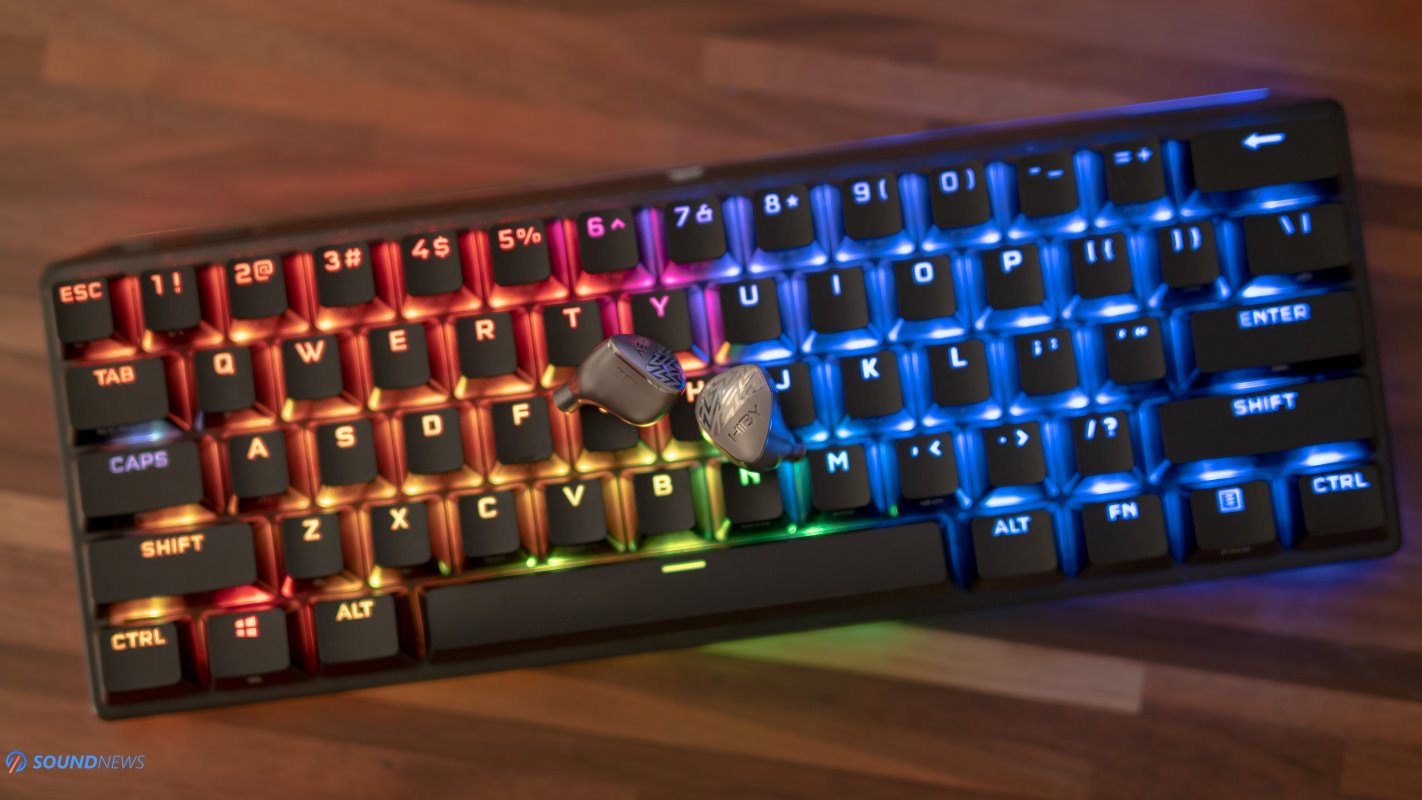
II. Dynamics & Transient Response
Ladies and gentlemen, the search is over. The bass is…not only a highlight but a strong asset which I don’t remember getting from any other set of IEMs. The low-end is strong in this one, sometimes too strong, like putting the Meze Elite or Kennerton Rognir on an end-game tube amplifier which will be pushing and pulling your eardrums like ragdolls. The bass, its quantity, and quality make me throw away every single IEM I have in my possession and use the ZETAs instead. It’s a bit elevated (detailed measurements will be coming in the latest chapter) from linearity, but God damn! It’s fricking amazing, going all over the place in a controlled, clean, and highly detailed manner. Forget about low-quality subwoofers, as we are getting a REL S510 type bass quality and SVS PB-16 ULTRA type bass quantity. Imagine for a second how that bass might sound and you’ll arrive at ZETA low-end delivery. There were many IEMs that tried to mimic the sound of a high-end subwoofer, some of them even had long bass ports stretching a few centimeters long to improve the low-end definition and punch. Yet, all of those are paling in comparison to the ZETA. The bass feels powerful, it’s present when it needs to, it decays naturally without lingering a microsecond longer, and most importantly, it’s not spilling over the lower midrange. It is still voodoo magic to me, how a 10mm dynamic driver without having additional tubes and ports can provide as much energy and long bass sustains while remaining so clean and vivid is beyond me. I was listening to Doubling Blues (Album Version) by Count Basie (Qobuz / Tidal) and I couldn’t overlook a higher presence of her majesty: The Bass. The kick of the drums sent tremors into my skull, but the real show-stopper was the double bass, which reminded me about my stereo setup, adding so much presence in this region. The physical manifestation of the bass in a stereo setup is what makes me jump and exclaim, as I’m not just hearing it, but I’m also feeling it with my entire body. My statement might feel out of place, but the ZETA are so far, the only IEMs that can make me hear AND feel the bass with my timpani. The initial kick is strong in this one, the bass sustain is great and the decay feels just right. What’s not to like about them?
As far as I am concerned, when it comes to the initial kick, sustain, and decay of the notes, ZETAs are so far my numero uno IEMs. These are getting easily a 10 out of 10 in terms of dynamics & transient response.
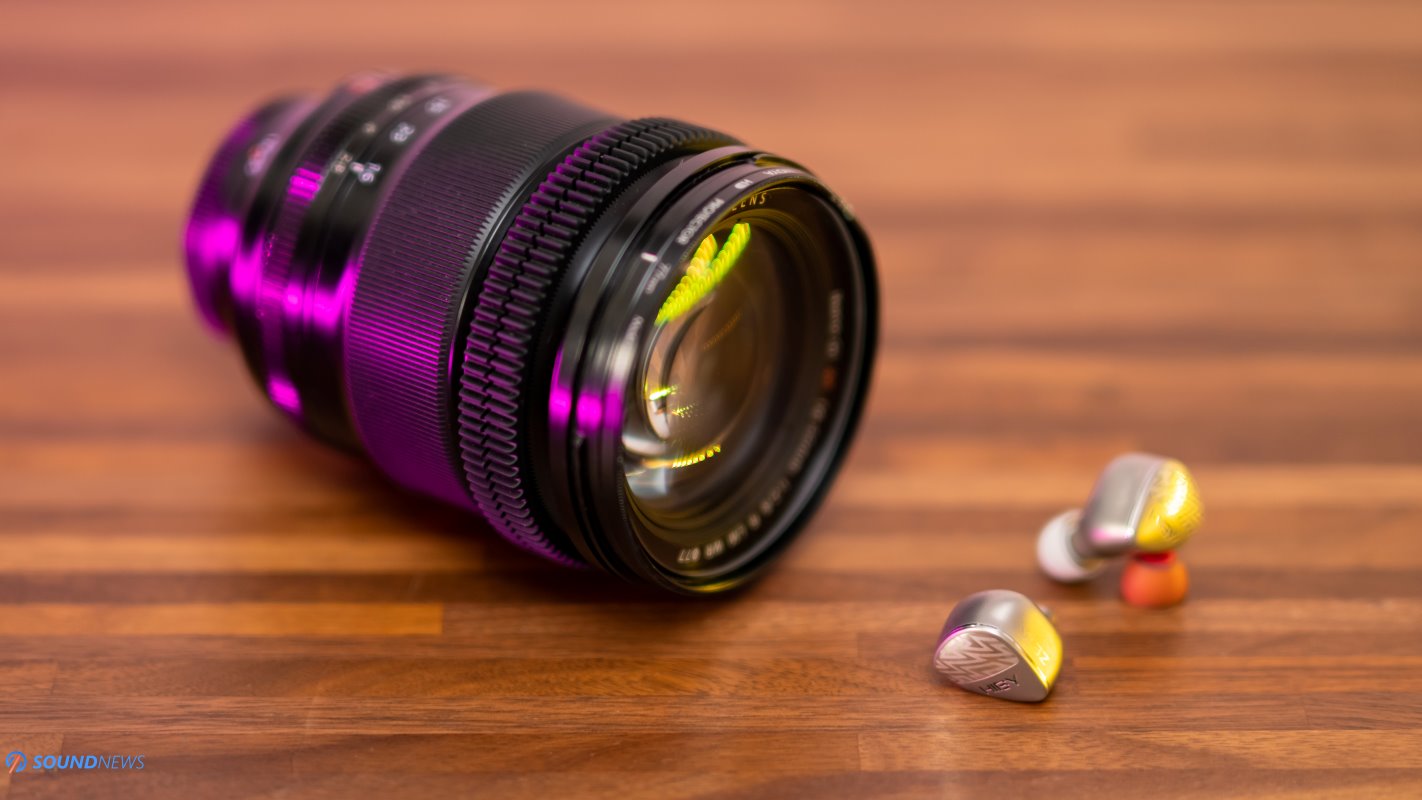
III. Genre Master IEMs
In the morning I’m usually listening to fast and punchy tunes that will wake me up and put sun rays on my face. I’m slowly transitioning to acoustic music and then when the sun sets, I’m indulging myself in blues with a glass of whisky nearby. I listen to most musical genres out there, with minor exceptions which I don’t understand that much. The problem is that different musical genres have distinct qualities that very few IEMs can render in all their glory. Some tunes will try to energize you and nothing more, others will relax you completely and a very few will be waking up your Sherlock Holmes senses, sounding more technical and cleaner than the rest. So far, I haven’t found true genre master IEMs that would do justice to everything, although I believe that 7Hz Timeless AE and to a higher degree, Sennheiser IE900 are very close to that title.
It is late night outside and Doud MacLeod sings his Unlonely melody (Qobuz / Tidal), which makes me a bit happier, knowing that I have a small family surrounding me. Sometimes I forget how lucky I am for chasing my dreams, all while raising a kid, giving and receiving love on a daily basis. Doug plays with high and low tonalities, he’s extremely talented not only with his voice but also with his acoustic guitar. The problem is that very few IEMs will render the beauty, nuance, and intricacy of the midrange. This is a very difficult zone to render, so difficult that in fact, many IEM makers are ignoring it completely, instead going with a V-shaped frequency response. This won’t happen on HiBy’s watch, as the midrange is beautifully rendered. I find it sweeter than that of FiiO’s best FH9 and FX15 IEMs, challenging and surpassing the 7Hz Timeless AE in this region, delivering a fuller-bodied midrange that is usually associated with Genre Master headphones such as the Meze Elite and Kennerton Rognir. I went from electronica and rock to blues and classical music and every single time, ZETAs weren’t pushing forward nasty leading edges, never putting me on a roller coaster ride across the frequency response, trying to show the beauty of every musical genre. With electronica, powerful dynamics, and transients emerged on the surface, while on blues and classical music, I was locking my hearing on the midrange region, which wasn’t dry or thin sounding and more like on the opposite pole, infusing more life and substance into that region.
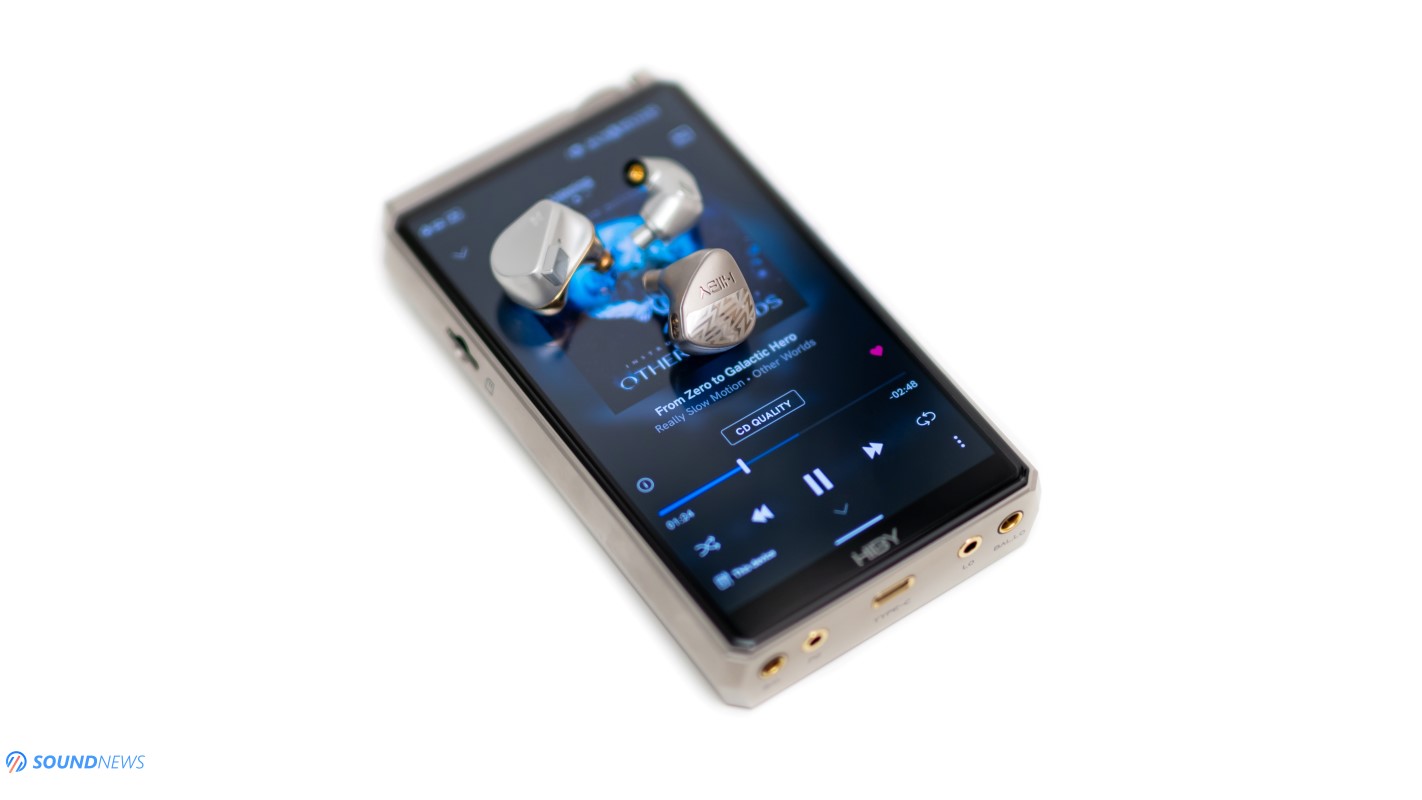
IV. Resolution & Transparency
Let’s be honest, what would you expect from a tribrid IEM, having a dynamic driver, a bunch of custom-made balanced armatures, and quad electrostatic drivers, working in a 5-way configuration? There are several brands that are putting as many (fake) drivers as they can in their IEMs and then selling them for peanuts money, trying to impress the crowds with a high driver count and not so much with their sound. But hey, those aren’t exactly HiFi material, at least in my view. However, when I see a lot of drivers and a price point that suggests high-quality craftsmanship and the use of genuine parts, then I will think about two things: complicated crossovers and impressive resolving abilities only if the crossovers were properly engineered. Out of pure curiosity, I tried several affordable KZ and CCA IEMs that had somewhere from 8 to 24 drivers, but none of them were HiFi enough for me, so much so, that I refused to review their newest products. ZETA was cut from a different cloth, we have a titanium body which already signals its flagship status and of course a dynamic, BA & EST tribrid driver configuration and an electronic 5-way crossover, which works in harmony without creating massive gaps or rises in the frequency response. As a side note, all 9 drivers were custom-made, yes, including the EST and balanced armatures according to HiBy’s strict specifications, never choosing off-the-shelf components and then trying to balance their sound with a complicated crossover. Custom drivers already imply the scale of the ZETA project and advocate how much work was put into it.
We have quite a few IEMs around here and some of them passed the one kilo buck barrier, but I’m not sure if any of them can compete with the ZETA when it comes to simple things like resolution and transparency. Putting world-class drivers in a metallic shell doesn’t sound like a complicated task to do, right? But considering that we have 9 drivers firing sounds into the same eardrums, the sound might get up front and congested, lacking transparency and leading edge, but that was not the case with the ZETA.
I was listening to Alive by Ajeet, Peia & Nessi Gomes (Qobuz / Tidal) singing together with a couple of air instruments and percussion work playing in the background. This single was recorded with an omnidirectional microphone, where the singers create a circle around the microphone singing in harmony on different tonalities so we could focus on them separately. The air between their voices was higher than usual, on top of that, the hands clapping, the guitar, and the harp sounded behind my back, reinforcing a feeling of a highly transparent sound that could show the smallest intricacies, even those playing from higher and lower altitudes. While such musical genres might not be to your liking, please give it a try, especially after a hard day at work, closing your eyes shut. Their voices relaxed every muscle in my body, putting me into a meditation state, achieving inner peace in less than 5 minutes.
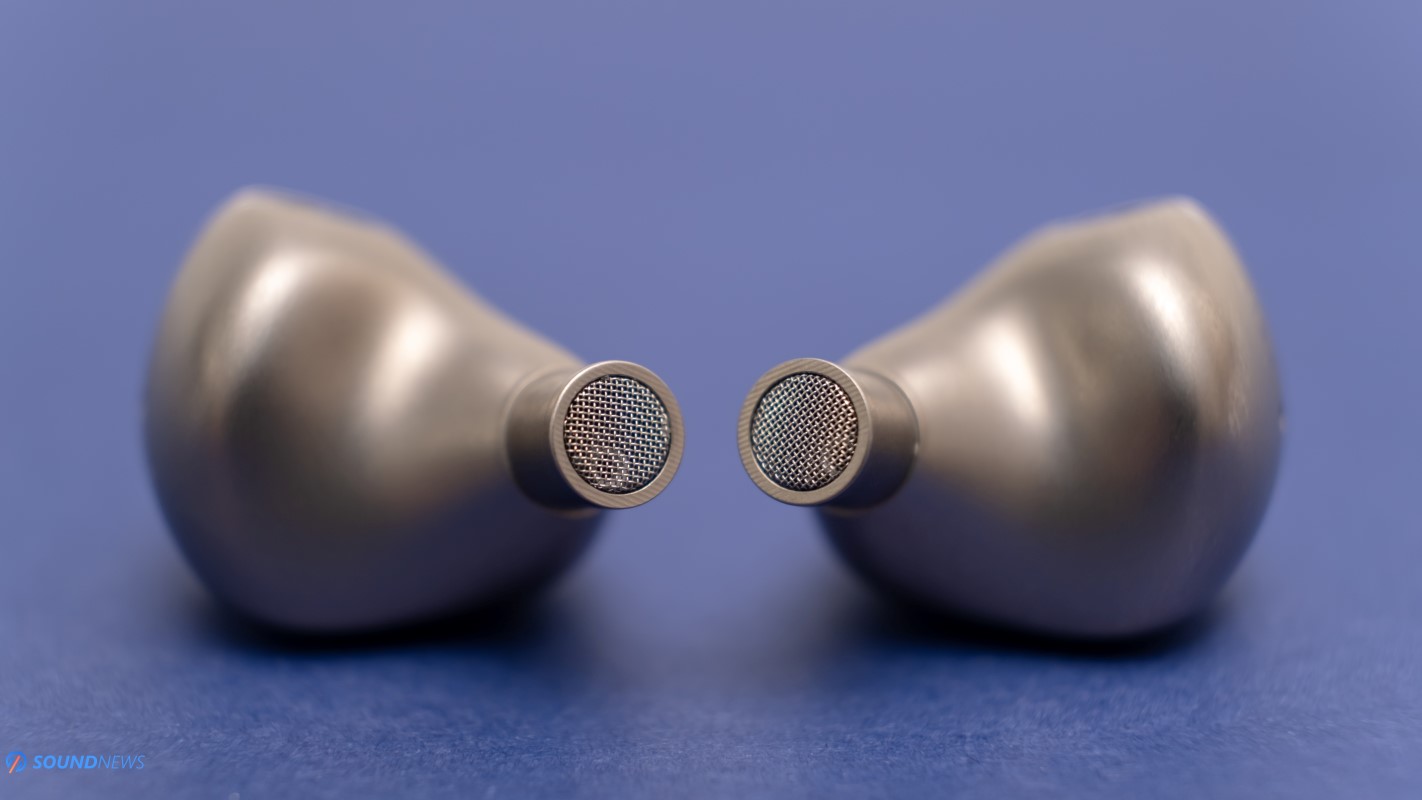
V. Soundstage & Imaging
While this is the fifth chapter, suggesting that ZETAs won’t impress you as much with their sound staging capabilities, this is partially true. You see, every IEM, being a vented design or not, cannot bypass the physical laws of our world. Regardless of how good they are on a technical level; small drivers will always deliver small sounds and vice versa. A 4” woofer can bring a decent amount of air into the room, but an 8” woofer will deliver four times the air mass, filling every corner of the room. With headphones and IEMs, the story repeats itself. From planar-magnetics, the massive looking Erzetich Charybdis are still the biggest sounding headphones I know of, and from dynamic cans, Sennheiser’s HD800/S are still reigning supreme. With IEMs, we have much smaller drivers which push lesser quantities of air into our eardrums and since there isn’t an air gap between the eardrums and the IEM body, the sound always appears playing inside your head. With that out of the way, a few IEMs can still image like crazy and surround your head with sounds coming from everywhere. Others, on the other hand, cannot deliver such tricks.
Listening to Selected Works 1985 – 2005 by The Mirrors and Gabrielle Roth (Qobuz / Tidal) creates a half circle of sounds playing before your eyes, getting a 180-degree vision in front of you. I’m not sure if the final mastering was done via headphones, but it feels that way. Silver Desert Cafe is not only playing on different layers, creating a separated background from the main show, but the instruments themselves were shooting sounds from different angles to my left and right. Getting a deep-sounding performance is weird, especially via IEMs, but HiBy reminded me that everything is possible with clever engineering. The soundstage wasn’t small, bringing a substantial amount of air in between the notes, but the imaging and depth were something that impressed the hell out of me, getting the feeling of a musical act happening in real-time, substantially boosting peripheral hearing.
Generally speaking, with things inserted deep into your ear canals, you will be impressed by the stereo imaging and less by the soundstage and that’s what I’m getting with the ZETA.
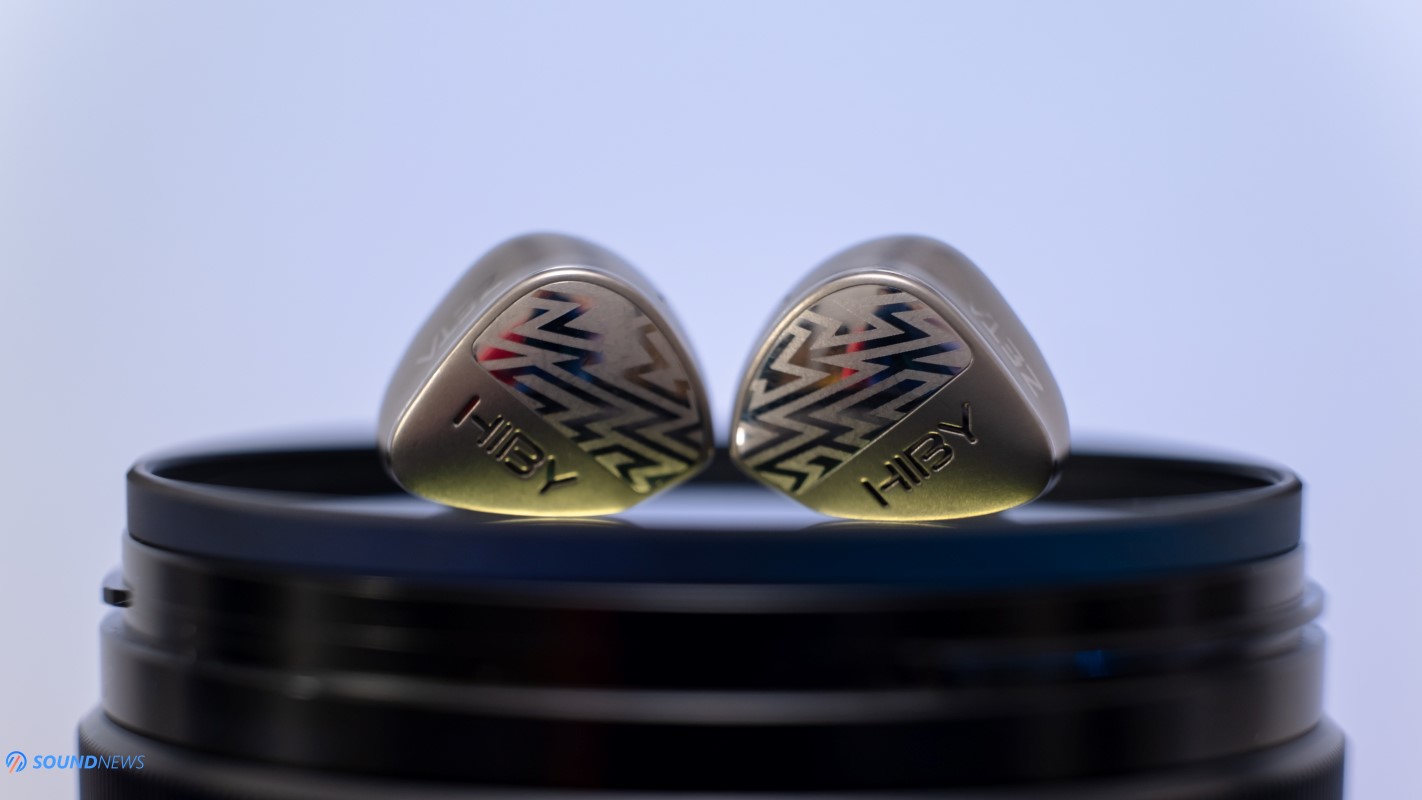
Frequency Response
VI. Bass
When Colma by Buckethead, Drum Solo by Gojira, and Perceiving All by Symbolico are at the edge of pain to listen to at 90dB, you know that you are dealing with bass head material. Quantity-wise, these are going slightly overboard by several dBs, bringing high energy levels and a strong kick in the lowest octaves. While the mid-bass punches like a frenzied berserker, the star of the show is the sub-bass, that not only reaches the lowest 20 Hz pits but also sustains and decays all that madness in a natural fashion. The bass isn’t only overly powerful, but nicely controlled, clean, and layered, getting all the qualities a bass-loving headphile dreams of at night. Ever since getting the twin Enleum brothers (HPA-23RM and AMP-23R), all my desktop headphones are sounding like having 90-ties rave parties all the time, adding a powerful bass slam, but the ZETA sounds like that by default, outperforming a few flagship planar headphones at their own game. Meze Elite and Kennerton Rognir are still reigning supreme in this region with a proper acoustic chain, but at just a fraction of their cost, I’m getting similar bass quantities and qualities. My childish groovy needs are fully satisfied and since we get a proper kick and speed, there is nothing I would tone town on the ZETA.
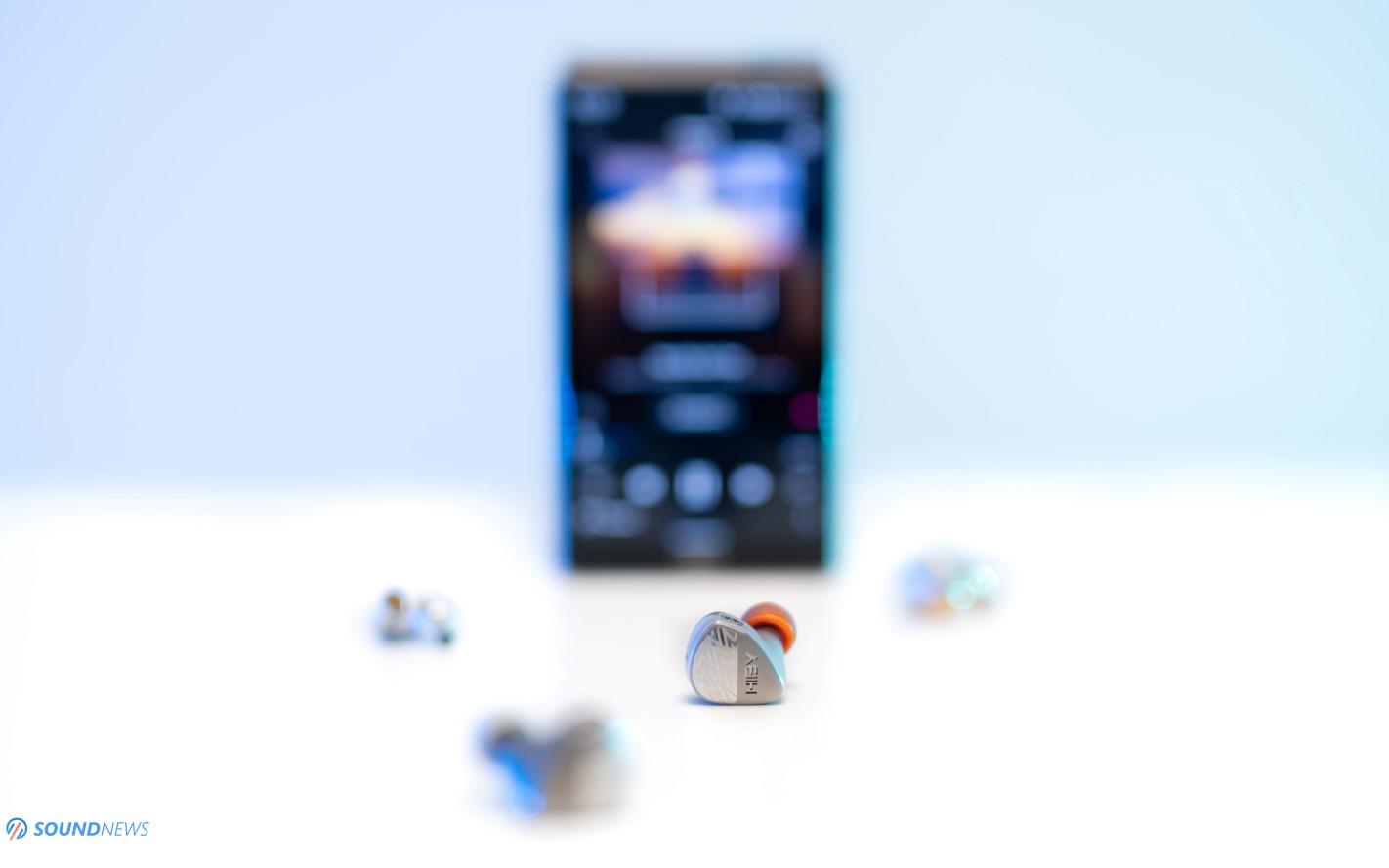
VII. Midrange
Most of my listening was done via a HiBy RS8 flagship DAP which uses a network of resistors to convert the digital signal into an analog one. The R2R ladder DAC architecture is known to add warmth and sweetness, especially in the midrange department. HiBy went with a more reference tuning on RS8, infusing a lower dose of sweetness into it, but still, the ZETAs were blooming on it, fully unlocking their potential as they should. After enabling the customized presets in the Darwin Controller and picking the ZETA from the list, something happened with the harmonics. The frequency itself didn’t change, but the sound got smoother, fuller-bodied, and weightier in the midrange. Their timbre went from great to outstanding with a press of button and I now understand why HiBy recommends the ZETA with their flagship DAP. With my reference desktop setup, which consists of an end-game streamer, R2R DAC, full tube, or a fully-discrete amplifier, the ZETA was even crazier sounding, pumping wackier dynamics down low, while further decompressing the sound. Both the RS8 and my desktop rig excel in the midrange department, I built my rig specifically for a natural and life-like presentation, and unsurprisingly, this is exactly how ZETA was sounding on both rigs. What was clear to me is that ZETA can slightly alter their voicing depending on the source and amplification and in the wrong conditions, they might be less impressive in here.
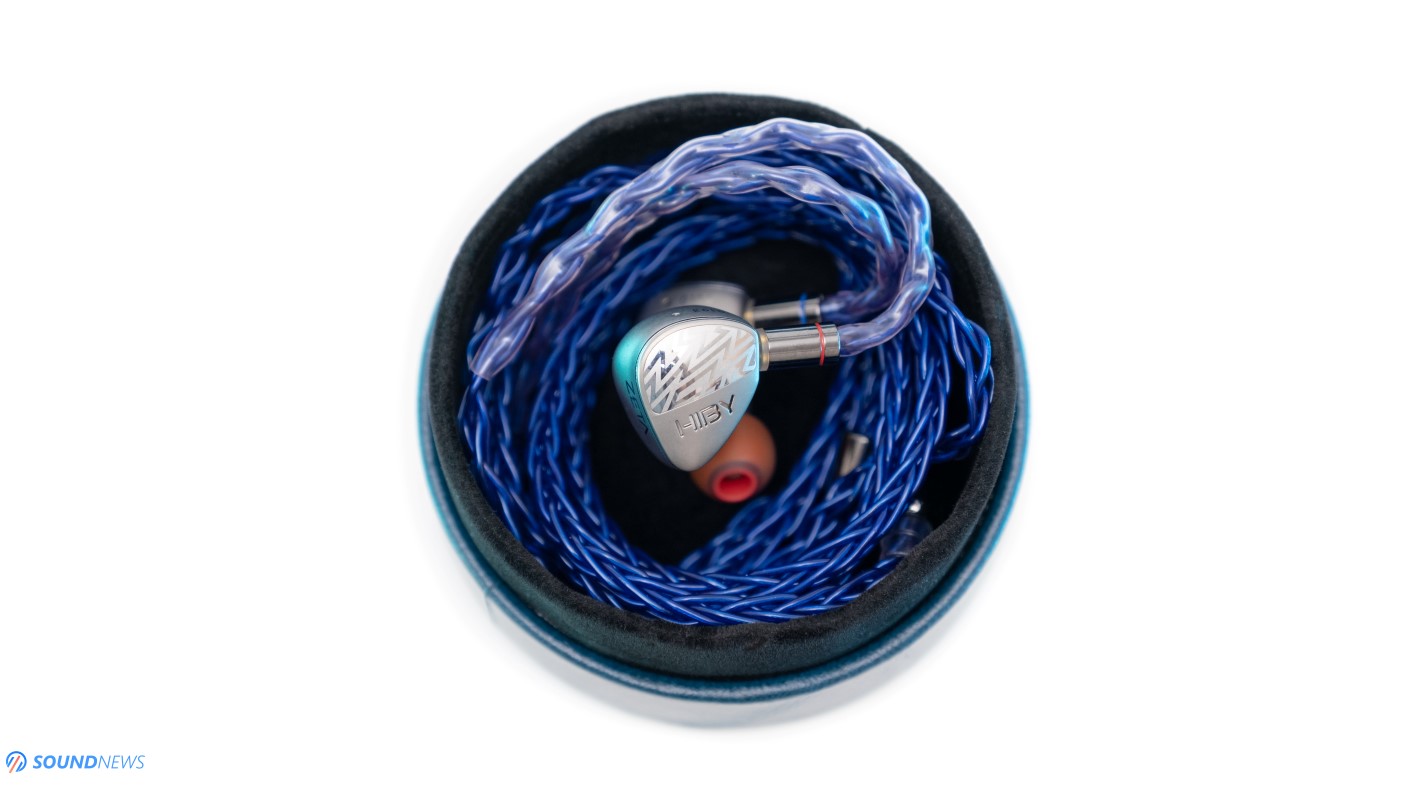
VIII. Treble
I also have the FiiO FX15 tribrid IEMs at my disposal that are also using EST drivers for the treble region and while those are sounding great considering their $749 price point, the treble region sounds like a different entity versus the rest of the frequency response. With FX15 you have the treble and then the rest of the frequency response, having an unusual gap, like there is a minor timing issue between the EST and the rest of the drivers. On a few tunes that created a psychological effect that something wasn’t right sounding to me, the timing of the drivers felt a bit off, getting a weird vibe at the end of the day. ZETA has a similar working principle, but the treble doesn’t feel like a different entity and the timing feels just right. I don’t hear a faster treble and a slower bass and the end result is a coherent sound that sounds just right. The custom third-generation electrostatic drivers of Sonion are true marvels when it comes to treble resolution, definition, and contour. The treble is of the highest quality, think almost Stax or Susvara levels of quality. There is so much definition and detail that it’s almost redundant to give further explanations.
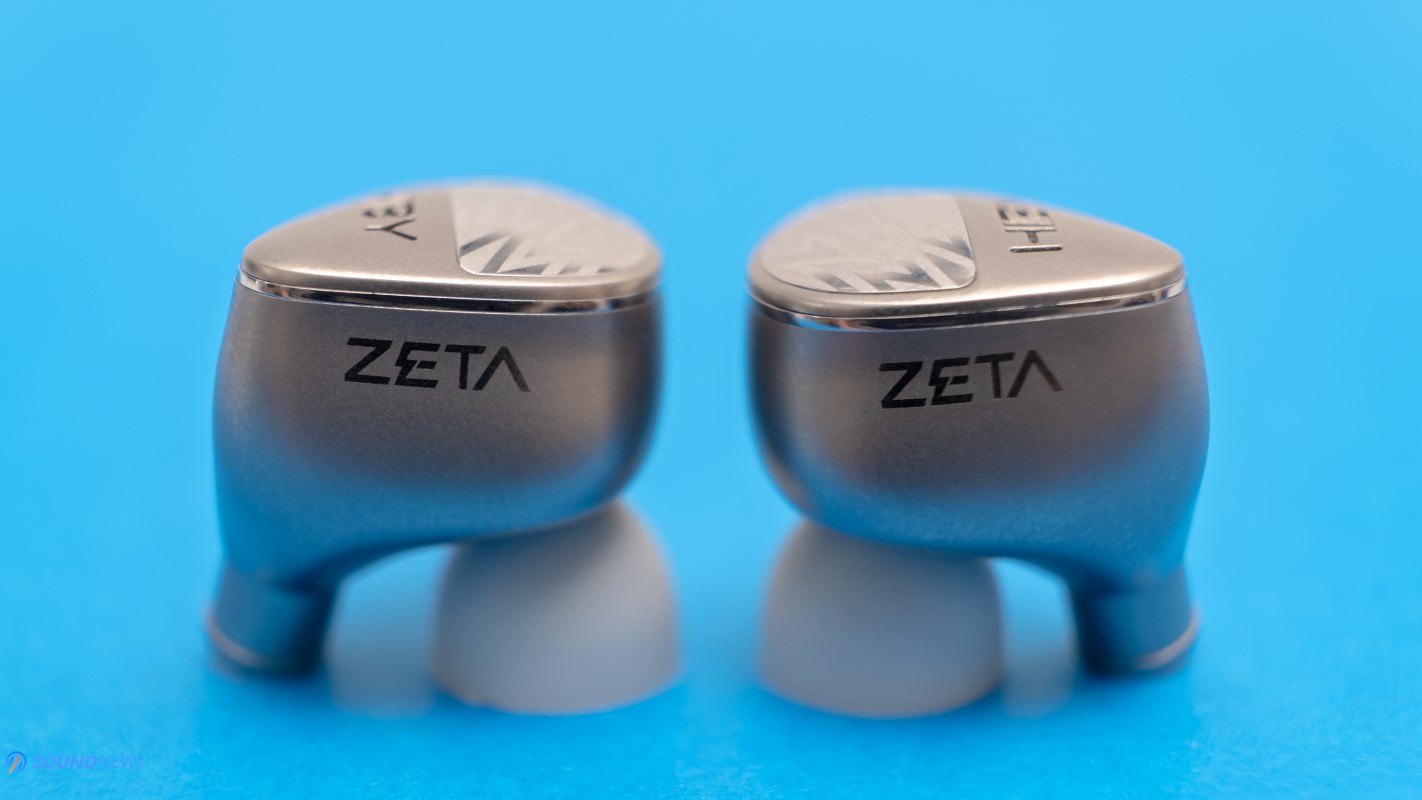
IX. Detailed Measurements
After offering my subjective impressions, let’s check how things are looking from an objective standpoint. I used a Singxer SU-6 DDC which galvanically isolated the USB ports of my PC, followed by a Rockna Wavedream Signature DAC and Enleum AMP-23R which were doing the heavy lifting. The measurement rig used was a MiniDSP E.A.R.S. system calibrated with IDF (IEM Diffuse Field) compensation files. Please note that E.A.R.S. is not following any IEC standards, meaning that my readings can’t be used as reference measurements or anything like that. I’m doing them for fun, getting a general idea about `their sound signature & performance. I measured them a couple of times, as both channels needed to be matched. No side pressure was applied to them, staying still in their natural position.
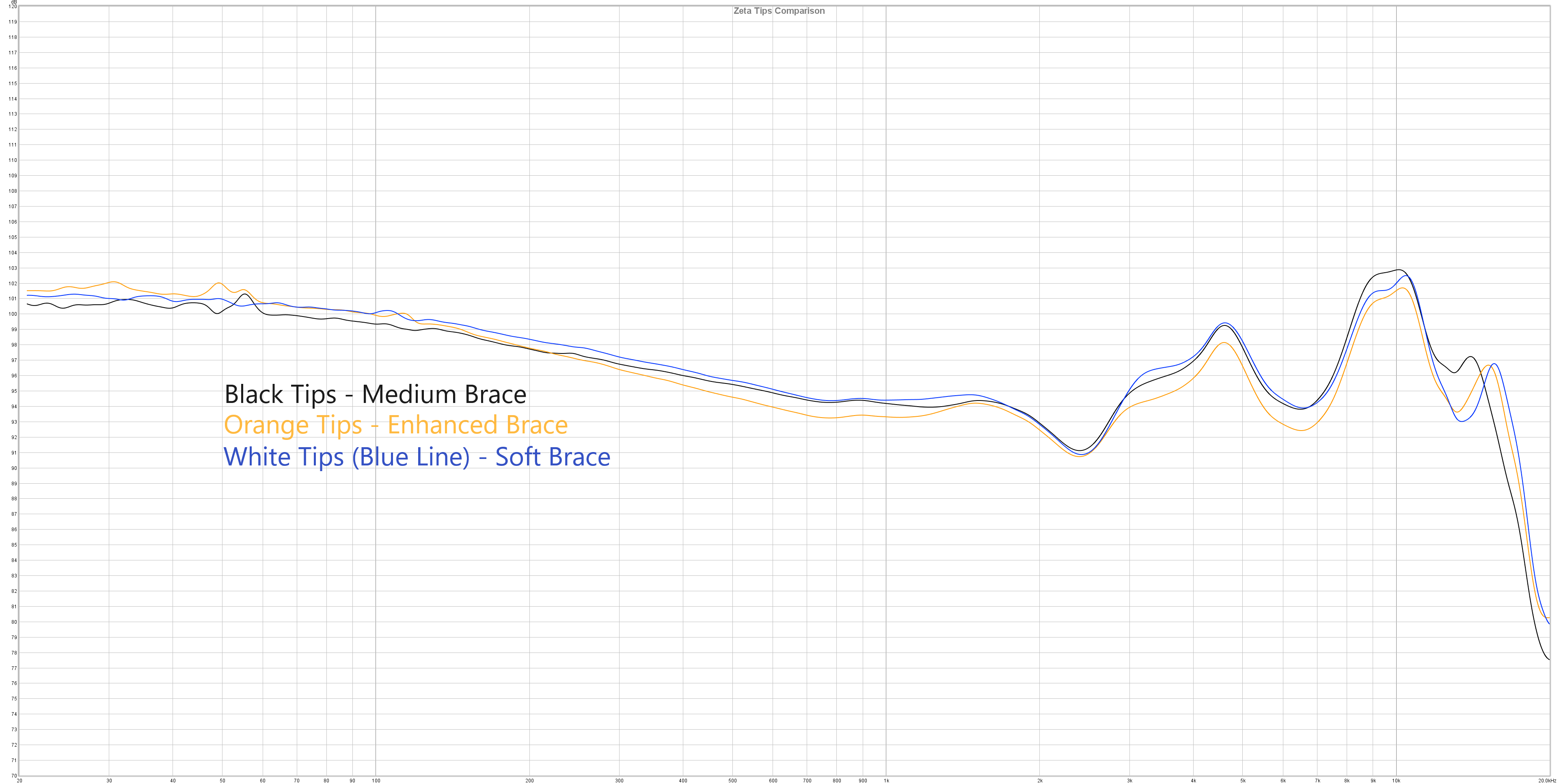
Take a look at a heavily zoomed graph where the soft brace, medium brace, and enhanced brace ear tips are compared. I expected a bigger difference in the frequency response, but it seems that HiBy didn’t want to alter the voicing, only the comfort level and I think they succeeded. There is a minor difference on the orange tips (enhanced brace) which seems to be offering a better seal, thus slightly improving the bass performance and lowering the treble region. In my case, soft brace white tips worked the best for me, using them for long listening marathons without too much trouble.
A gentle 1/12 smoothing was applied and right off the bat, you can see their outstanding bass performance which is elevated by a few dBs. Do note that I sent a 300 Hz sinewave at a 94 dB SPL, so anything higher or lower than 94 dB is a rise or a dip. The sub-bass looks legendary and sincerely, I never experienced such a powerful bass, not even the LittleDot CuKIS has as much bass energy. The midrange is good even if there’s a slow slope. Up to 2 kHz, the signal is still not dropping below the test signal, getting a natural midrange representation. My test jig is (luckily) not following the Harman curve so the treble might look like it’s riding a rollercoaster, but I assure you that’s normal behavior. The most sensitive part of our hearing (between 5 and 8 kHz) is not going up from linearity and while there are a few rises that add presence and bite, the ZETA never sounded bright or edgy. There are several slopes at various places in the treble and a 7dB rise at 10 kHz which isn’t bothering to me but could be a minor issue with younger people sensitive to treble energy. Regardless of the source, ZETAs were never harsh and if you look closely, there is a treble roll-off happening past the top octave that makes them enjoyable to listen to in long listening sessions.
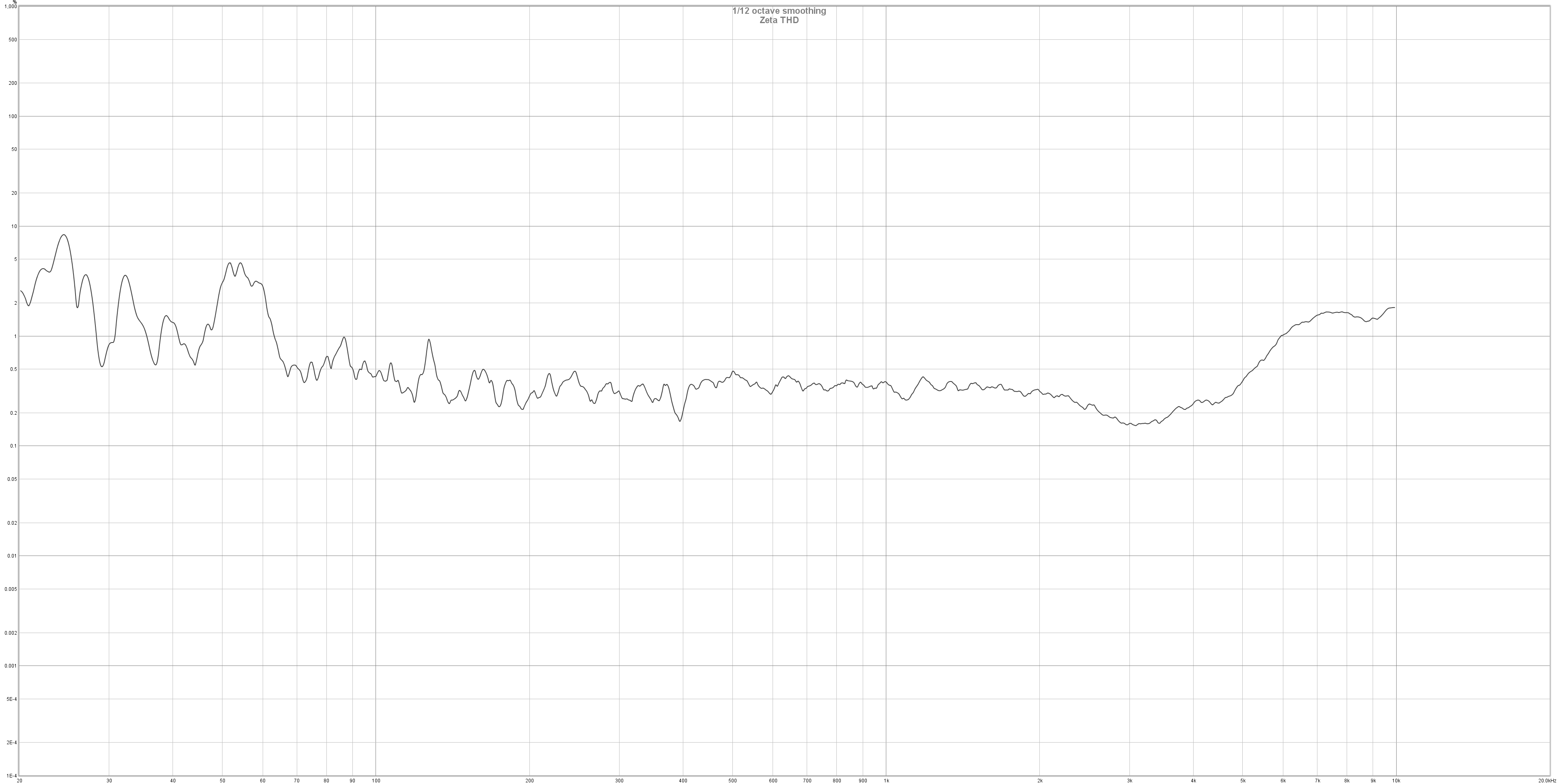
Their THD reading is good but not great. Do note that I’ve sent a 94dB test signal and not an 84dB one as recommended by the MiniDSP, so naturally the distortion reading is higher than usual, especially in the bass. It sometimes reaches 6% in the bass, but usually stays in the neighborhood of 0.4%, which is great.
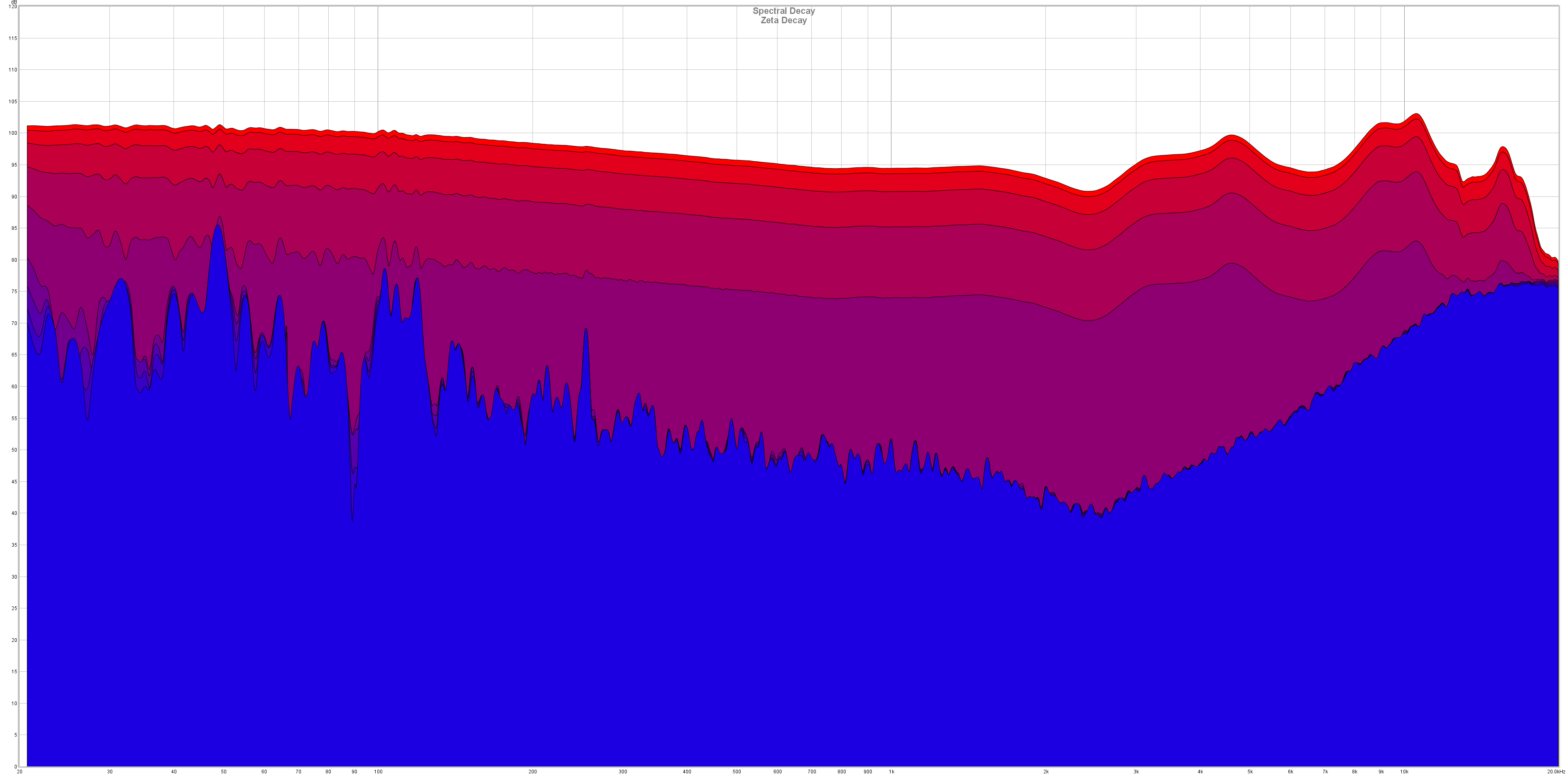
Spectral decay looks interesting, to say the least. From this graph, it was clear that HiBy lowered the speed of the EST drivers so they could match the speed of its dynamic and BA drivers. The treble has a longer decay than usual, I don’t think I ever saw such a treble slow-down, but the end result is more important than a graph and I can attest that the treble region has a similar acceleration and decay with the rest of the spectrum, getting a coherent and time aligned sound.
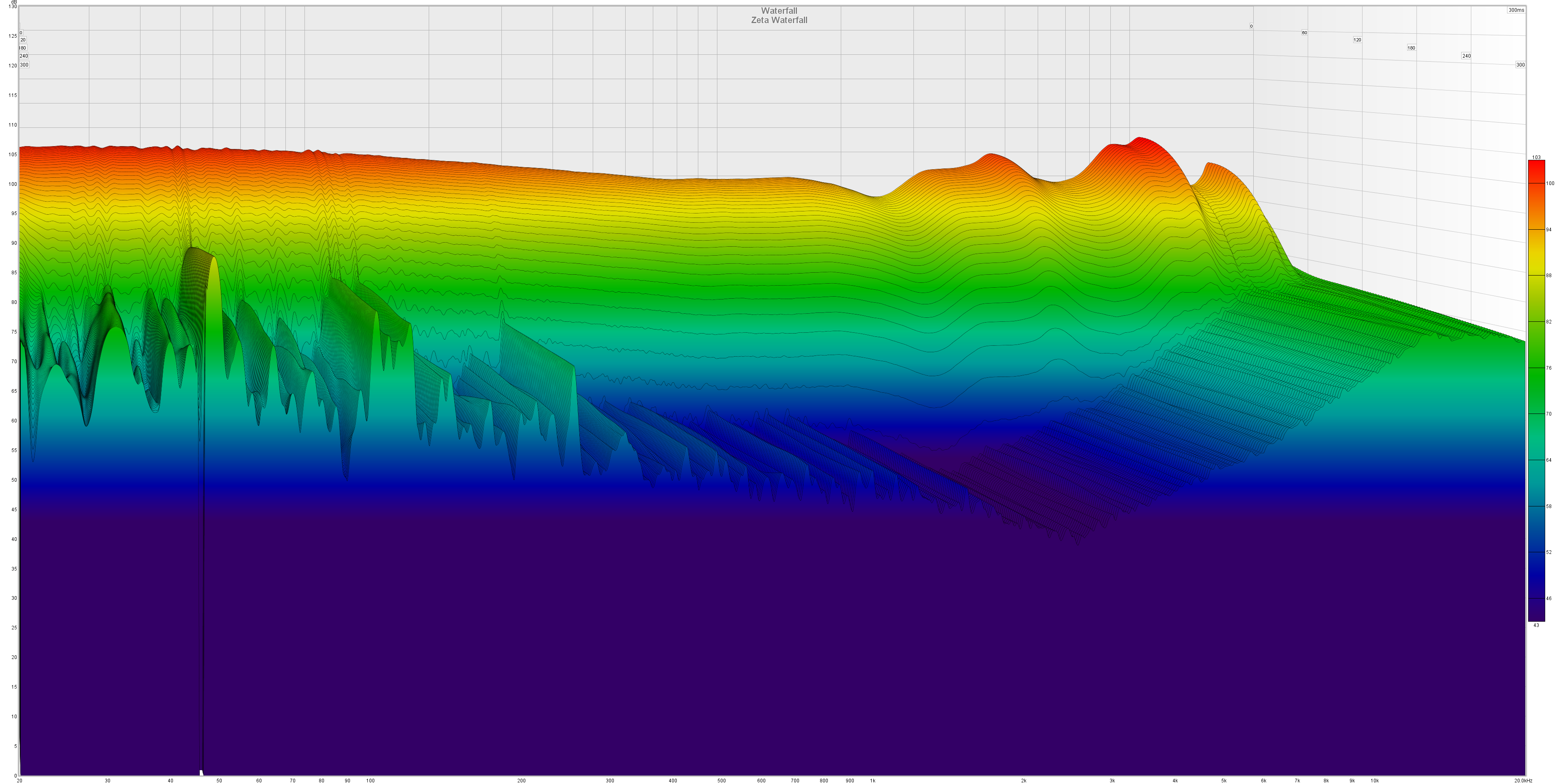
Waterfall combines the FR plot and spectral decay into a single graph and you can see their FR from a different angle including their slow-ish decay up top.
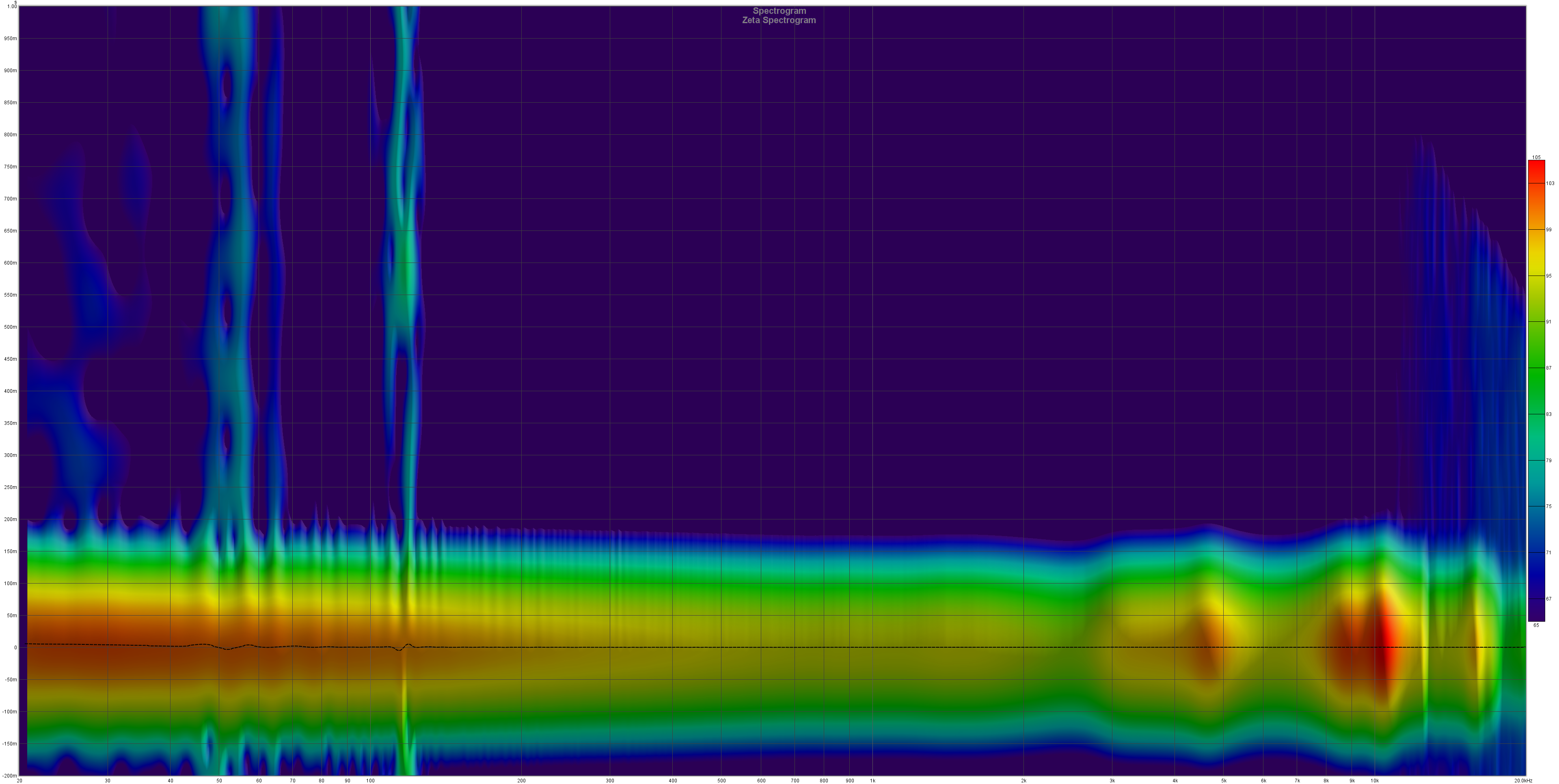
The spectrogram shows a longer ringing happening at 50 Hz, 120 Hz, and then in the top octave, which suggests the use of an electronic crossover to slightly alter the timing of the drivers depending on their type. The regions affected might also be crossover points which add sound fluctuations. I don’t remember getting such a reading up to this point.
So far, I’ve got the most unique-looking graphs, especially the decay and spectrogram are trying to tell a few stories about their design, but I cannot complain too much about the frequency response. The bass indeed goes up from linearity, but who cares, when we are getting such a fun sound signature?
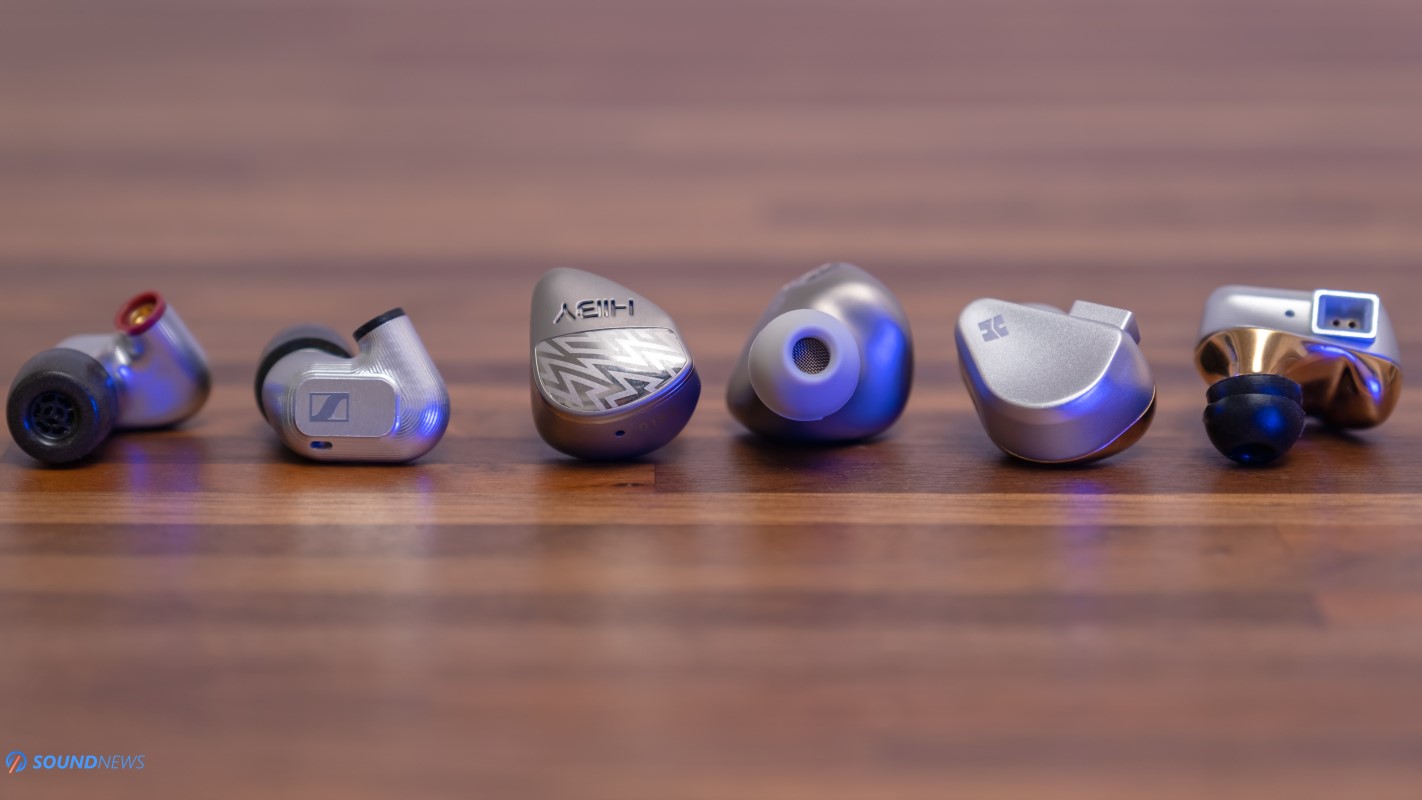
X. Two Interesting Comparisons
A. HiBy ZETA ($1399) VS HiFiMan Svanar ($1999)
Disregarding their build quality and cable differences, which are (much) higher on the ZETA, plus the shallow 2-pin connector of the Svanar which sadly, will shut down your third-party cable hunt for good, let’s focus on their sound instead.
I was limited to the 3.5mm cable on the Svanar and the 4.4mm connection of the ZETA and right off the bat, there was a massive difference in volume, as I needed 30 additional steps on the Svanar to arrive at a similar SPL with the ZETA. The difference isn’t coming only from a lower sensitivity of the Svanar (100 dB VS 112 dB), but also from the BAL VS SE connection, as the balanced output of RS8 if by ~2.8 times more powerful versus the single-ended 3.5mm jack. The second thing that hit me was the air around the instruments. While Svanars aren’t up-front, close, and personal sounding, they felt that way when putting the ZETAs in the same octagon. ZETAs were further decompressing the sounds, especially to my peripheral vision, widening the stereo image and putting more sounds to my left and right. The soundstage was better on the ZETA and in my humble opinion, they offered an equally impressive stereo imaging.
Their tonality and frequency response came next. Svanar is going with a reference but somewhat flat sound which isn’t energizing any portion of the frequency response, except for treble, while ZETA is pushing Her Majesty Bass into the spotlights. The low-end is considerably more powerful, deeper, and punchier on the ZETA, sounding quite relaxed, but exactly as clean on the Svanar. The midrange was a coin toss on both units, I liked the lower midrange a bit more on the ZETA which was still pumping iron, adding oomph and presence, transforming the final performance into a fun one. Svanar on the other hand, felt more impressive in the upper midrange, making female voices slightly more defined. Aggressive music predominant by male vocals sounded bolder and heavier on the Zeta, while Svanar worked better with higher-pitched soprano voices, so again, it’s a draw in my opinion.
The treble region is beautifully rendered by both units. HiFiMan is known for delivering world-class trebles with ANY of their designs be them IEMs or desktop headphones and Svanar is no different. I like them so much in this regard that I’m sometimes going with a Baby Susvara nickname. The trebles are strong in this one…but sometimes a little too strong, especially in the most sensitive part of human hearing (between 5 and 8 kHz). The RS8 tames that energy excess in no time and HiFiMan’s EF600 is doing the same thing, but put them on a Topping or SMSL stack, and you might get a very different opinion about their treble region. The ZETAs have the same sparkle, zing, and spectacular treble execution, with the exception that we don’t get a rise in most sensitive parts of human hearing. Moreover, the ZETAs are then slowly rolling off the upper treble (past 16 kHz) for a more relaxed sound long term, while the Svanars are still firing a few canons in that region. From a frequency response standpoint, ZETAs are tuning towards a fun listening experience, while Svanars are unleashing their zooming skills, unearthing more energy and nuance, especially from the upper treble.
At first, the Svanar might sound like it has additional details and that’s partially true in the upper treble, it’s the other way around when listening to bass-intensive music, where ZETA will highlight several nuances that felt muted on the Svanar.
The sound acceleration, speed, and sustain are equally impressive on both units and I can certainly call them lightning-quick in every regard and frequency range. The one that brought down the thunder was the ZETA, as the sheer kick and bass slam was out of this world with them.
Overall, we have two different tunings, one catering to music lovers for a fun listening experience that will start moving your body to the rhythm of the music, while the other goes with a more reference tuning, catering to HiFi enthusiasts and audiophiles. Which one will be more to your liking? Look into the mirror and ask yourself, you’ll have your answer in no time. As for me, I need to be impartial and while I do have a healthy dose of subjectivity, what impressed me was having a similar skill set and technical abilities that can challenge the very best IEM of HiFiMan while going with a more wallet-friendly price. That’s the true superpower of the ZETA.
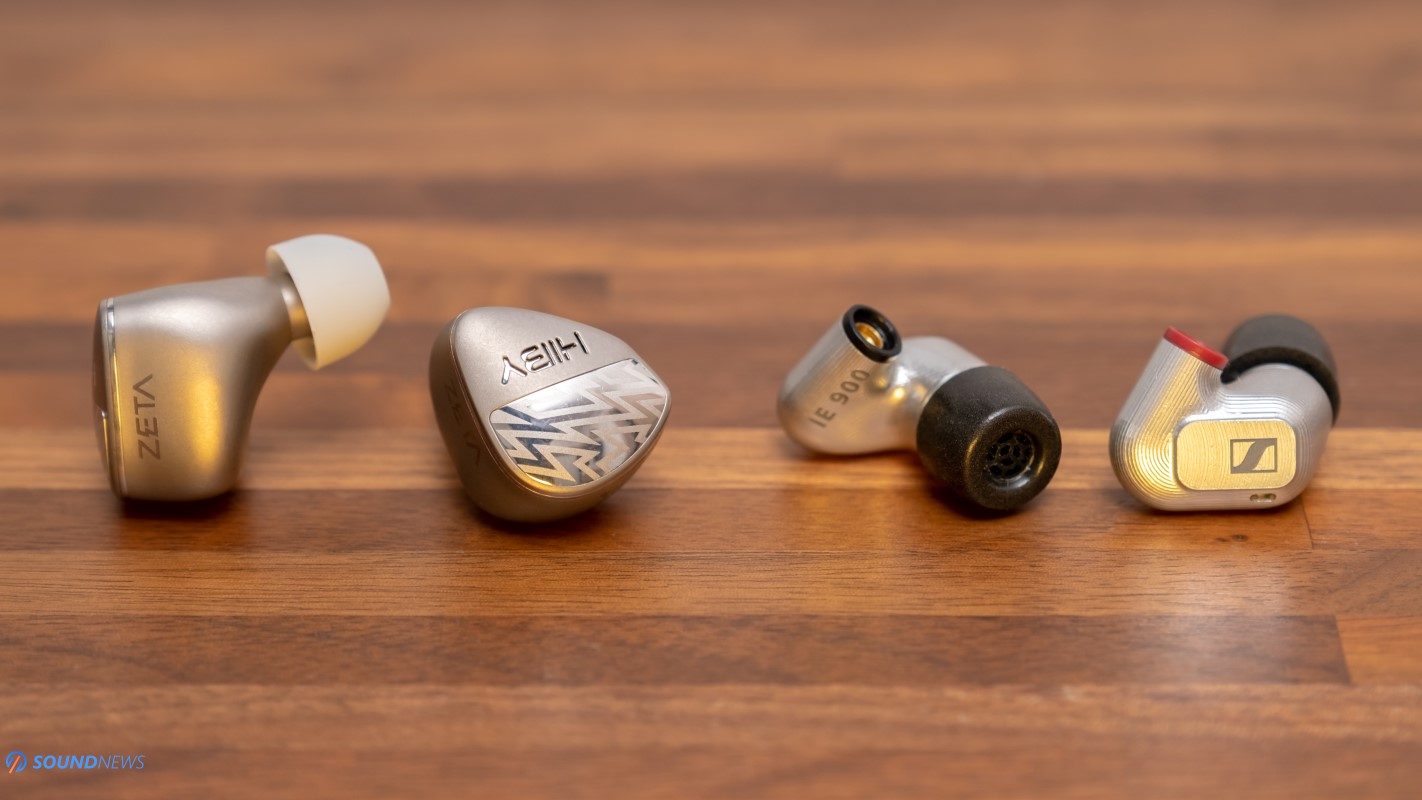
B. HiBy ZETA ($1399) VS Sennheiser IE900 ($1399)
Now we’re talking! We have the same price point, a timeless look, and amazing build quality on both units, plus similar packaging and accessories. I can only nitpick about IE900’s stock cable which is better than that found on Svanar wired, but it’s not as good as the one bundled with the ZETA. IE900 on the other hand are probably the lightest weight IEMs I have come across, winning massively when it comes to comfort levels in long listening sessions. So far, it’s a tie.
I used their stock 4.4mm cables and it seems that didn’t need to volume match them, as IE900 and ZETA offer a similar sound pressure level via RS8 which makes this comparison so much easier.
IE900 presented itself with a highly refined, grainless, and completely brightness-free sound. The sound wasn’t smooth per se, but the overall experience felt more relaxed, never trying to flex a facial muscle or bother me with anything in particular. IE900 has an even frequency response going with a more reference tuning, while never sounding clinical or harsh. IE900 sounds fun and pleasing long term, but the ZETA is more so, especially when listening to high-dynamic range tracks. IE900 has an outstanding bass performance. Quality and quantity-wise, they sound like a proper pair of IEMs, but the ZETA is bringing additional nuances and higher doses of energy in the bass. Even with acoustic music, you can feel that more energy is oozing from the lowest octaves, and there is a bigger air mass hitting your eardrums. I hope I don’t sound like a broken record, but if you love playing with bass-intensive tracks, then the ZETA is so far, unbeatable in this region.
The midrange is fabulous on the Sennheisers! The lowest and the upper midrange are covered entirely, getting sweeter and a hair fuller sounding than the ZETAs which are slightly lacking in the upper midrange region. The difference isn’t a massive one, but IE900, and most Sennheiser headphones for that matter, are known for a natural representation of the midrange and once again, the IE900 didn’t disappoint a single bit. The midrange performance of HiBy’s best wasn’t thin or light-footed as poorly designed IEMs sounded to me and after a few rounds of comparisons stretching for about two hours, the tonality gap was shrinking by the minute. IE900 undoubtedly is still reigning supreme in this region, closely followed by the ZETA and then by the Svanar wired. The treble region on the IE900 felt so relaxed and inoffensive that even aggressive stuff wasn’t a problem long term. I understand why IE900 is so widely appreciated by IEM lovers, these are very easy to like and pair with all sorts of portable devices. The system matching isn’t a concern with them as the treble was soft and smooth, never trying to drill a hole in the eardrums. The ZETAs on the other hand, demand more focus from the listener, having slightly sharper leading edges, the contour of the notes felt stronger and while there is still a natural roll-off above 16 kHz, they were clearer and more detailed in this region by a little. The scores are closely matched, so let’s move on to their technical abilities.
IE900 has a sense of calmness arranging the sounds at a good distance from your face. The depth feels great at first, but there aren’t so many sounds that are coming closer or going farther away from your face. The depth doesn’t have the note separation of the ZETA, although when it comes to soundstage, ZETA appears a bit less impressive. At the 3-minute and 25-second mark on The Prophet’s Song by Queen (Qobuz / Tidal), the voices start jumping from your left to right ear and vice versa, creating a binaural vibe for more than a minute. This part was more playful on the Zeta, as the voices were getting closer and farther, something that was more static on the IE900. There wasn’t a night and day difference, but on the right source and amplification, ZETA is slightly edging out the IE900. The same can be said about their resolving abilities, IE900 was great in here always delivering and sometimes surpassing my expectations, but ZETA was giving me a little bit more of everything (except for the midrange), ultimately getting a more complete sound reproduction. IE900s are honestly great in here and I’m still scratching my head about how a single dynamic driver can produce as much sound, dynamics, and resolution. However, the ZETAs are ever so slightly more impressive here.
In the end, these two are more alike than different as opposed to the Svanar which had a different tuning altogether, and even if it might appear that I’m putting the IE900 in a bad light, I actually want to get a pair for myself, as that cohesive, even and highly refined sound across the entire frequency range is something we no longer get with high-end IEMs nowadays. We got a winner in the previous comparison, but right here, I’m on the fence about choosing my champion, I’ll leave you to decide which one tingles your senses a bit more.

My Conclusion
In the realm of tiny IEMs, it’s not often that you find words like “fun,” “engaging,” and “technical” in the same sentence. IEM manufacturers typically focus on a single objective, often discarding all other considerations. This is why the market is flooded with a wide array of IEMs, each with its unique tuning and sound profile, spanning from entry-level to high-end prices. As a reviewer, my mission is to scrutinize the strengths and weaknesses of the units under examination, helping you find the right balance and make informed choices that align with your needs.
Apart from some unconventional measurements in certain aspects (decay and spectrogram), a relatively high price point, and a medium-sized soundstage, which are common limitations of contemporary IEMs, I can’t pinpoint anything else that bothered me throughout more than a month of listening. Nowadays, most HiFi portable sources already come with a 4.4mm balanced option, so encountering a 4.4 mm-only cable didn’t particularly discourage me.
I carried them with me on several extended journeys, and on each occasion, RS8, along with the ZETA, reiterated that remarkable sonic performance is still attainable in the realm of portable HiFi. Priced at $1399, I acknowledge that some individuals might seek alternatives for a finely tuned pair of IEMs, and that’s perfectly acceptable. The best is reserved for the seasoned audiophiles, those who have tried a multitude of IEMs and portable devices in pursuit of their own audio nirvana. Custom drivers and custom electronic crossovers don’t come cheap, especially when you package the entire deal in a titanium shell.
They fully met my insatiable desire for impeccable dynamics and powerful bass in the lowest octaves, and I’m relieved that I’m not describing a unit that costs three to four times more, as recommending them would be a genuine challenge.
These IEMs made a significant impression on a veteran audiophile and music lover and as a result, I’ll be overlooking their measurements, awarding them with our highest honors. The Gold Award is well-deserved for having the audacity not to follow the crowd and for offering a fresh-sounding set of IEMs that prioritize the fun factor above all else. I have immense respect for their approach, and I eagerly await their future developments.

The ZETAs were generously provided by HiByMusic. You can acquire them from their web store. If you decide to get a pair, don’t hesitate to say hello and leave a comment below.
PROS:
- An excellent unboxing experience, getting a wide selection of accessories
- A well-made cable is bundled, made from high-purity copper conductors
- Great comfort levels especially with the white soft brace ear tips
- CNC-machined titanium shells have a timeless look
- I find them easy to drive, but they do like a healthy current intake
- Say goodbye to Harman’s target curve. It won’t be missed
- Excellent timing and control, cohesive sounding at all times
- Excellent dynamics, getting a powerful kick in the lowest octaves
- Great tone & timbre, smooth and weighty midrange region
- Extended treble response, without becoming harsh
- Offers an excellent stereo image and a decent soundstage
- Highly detailed and transparent-sounding
- Rich and full-bodied most of the time
- Their price was fully justified
CONS:
- A 4.4mm only detachable cable is provided. If you need a different connector, then you’ll need to invest in a new cable
- Decay and Spectrogram readings weren’t looking fantastic
ASSOCIATED EQUIPMENT:
- DACs: Chord Electronics DAVE, Rockna Wavedream Signature XLR, Gold Note DS-10 PLUS & PSU-10 EVO
- Wireless Streamer & Music Server: Rockna Wavedream NET 4TB, Zidoo Neo Alpha
- DDCs: Singxer SU-6, Matrix X-SPDIF 3
- Headphone Amps: Trafomatic Primavera, Enleum AMP-23R & HPA-23RM, Ferrum OOR + HYPSOS, Burson Soloist 3X GT 2023, Flux Lab Acoustics Volot
- IEMs: HiBy ZETA, Sennheiser IE900, HiFiMan Svanar, Westone MACH50, FiiO FX15, 7Hz Timeless AE & others
- Full-sized headphones: HiFiMan Susvara, Arya Organic, Ananda Nano, Audivina, Meze Elite & 109 PRO, Erzetich Charybdis & Phobos V.2021, Sennheiser HD800S, Kennerton Rognir (planar) & Vali, Apos Caspian, Sendy Peacock, Apollo, Moondrop Venus & others
- DAC/Amps: Shanling H7, FiiO Q7, Topping G5, xDuoo XD05 PRO
- DAPs: HiBy RS8 & R6 PRO II, FiiO M15S, Shanling M6 Ultra
- Balanced Isolation Power Conditioners: PLiXiR Elite BAC1500 (stereo setup), KECES IQRP-1500 and P14 (headphone setup)
